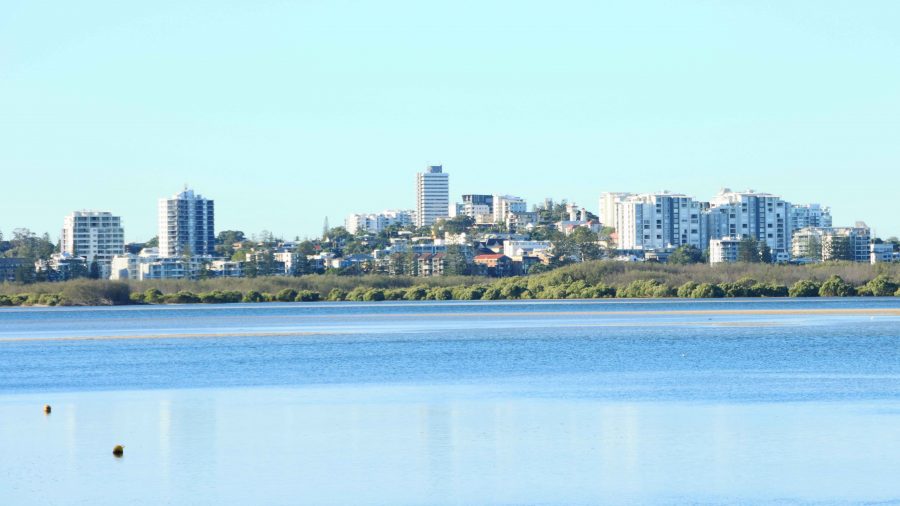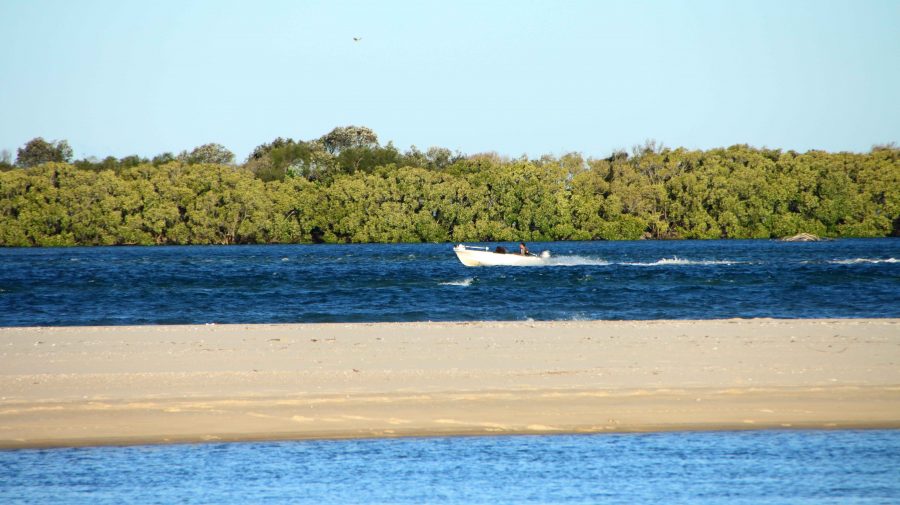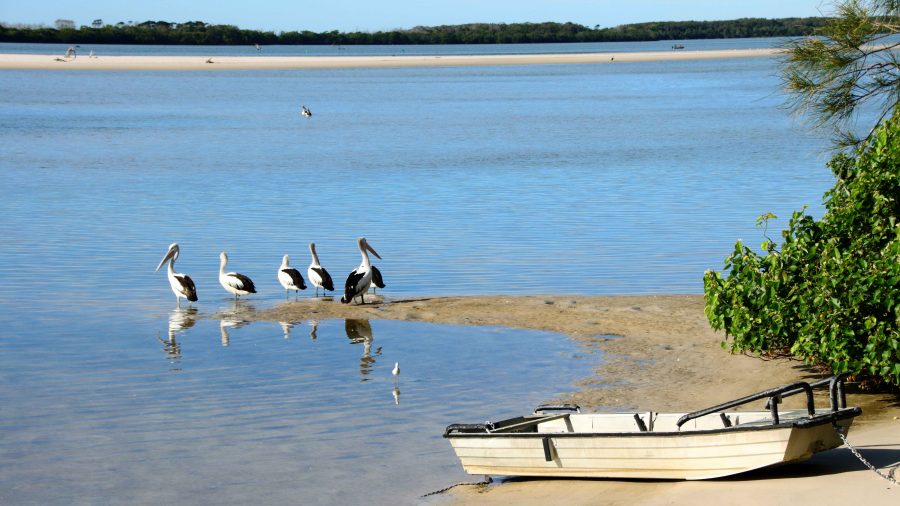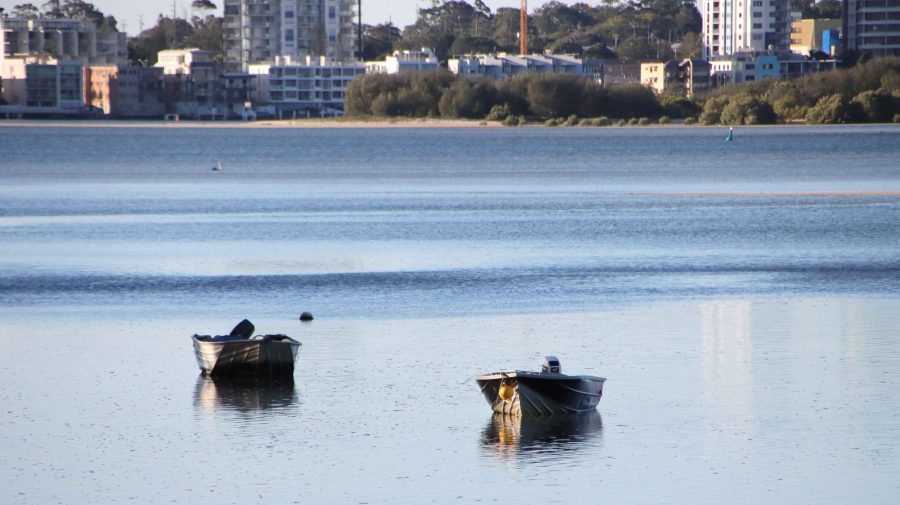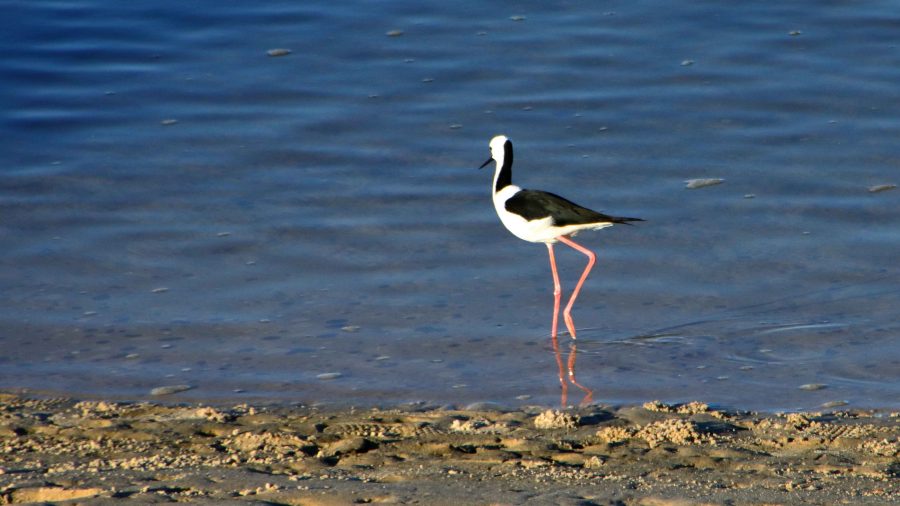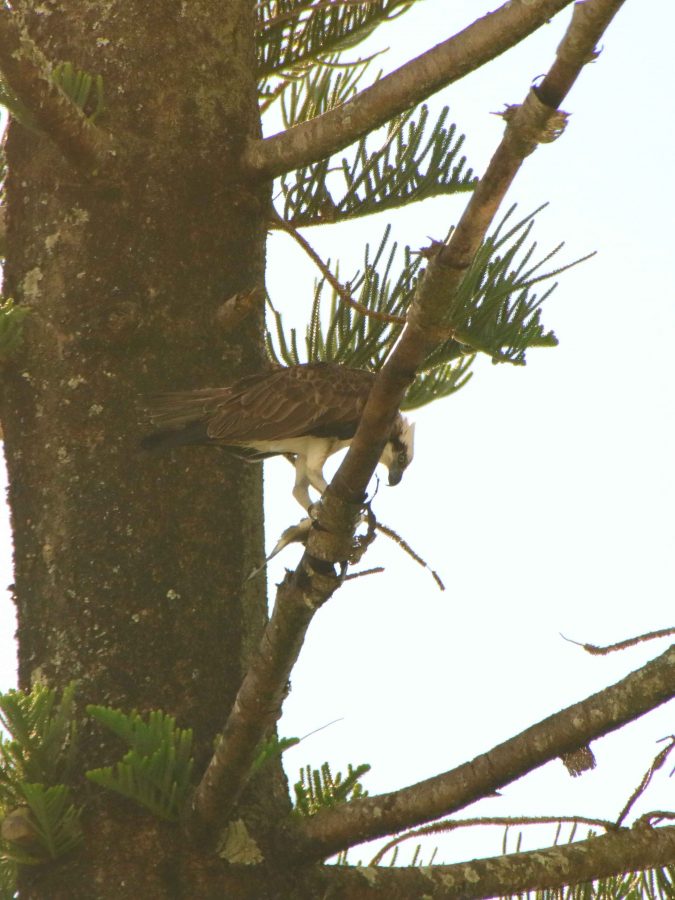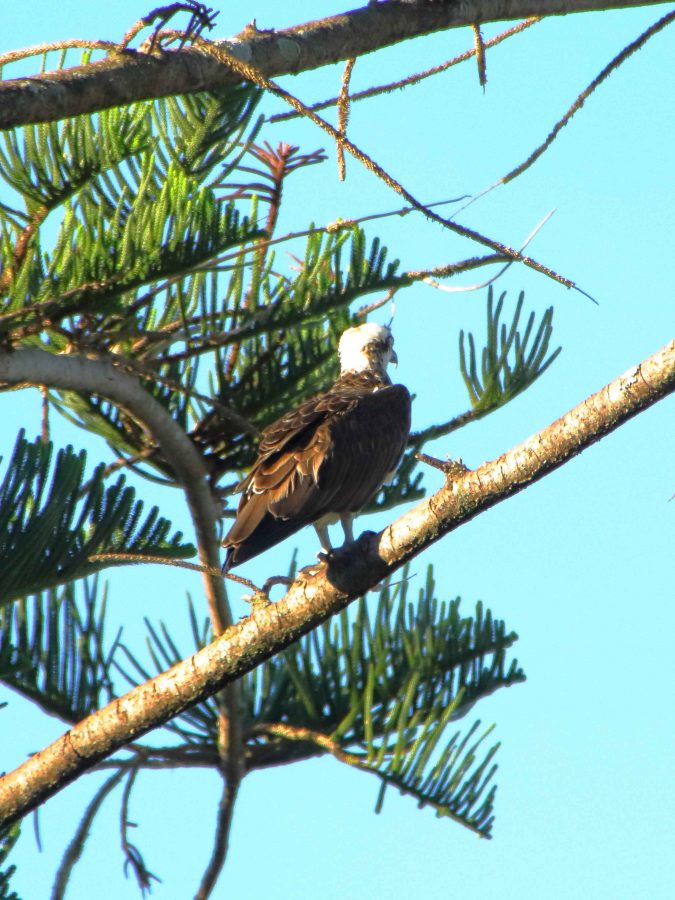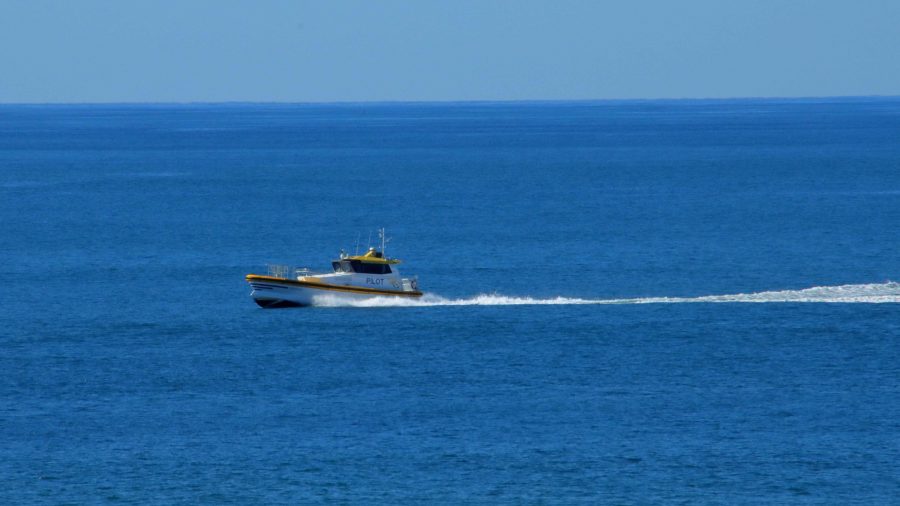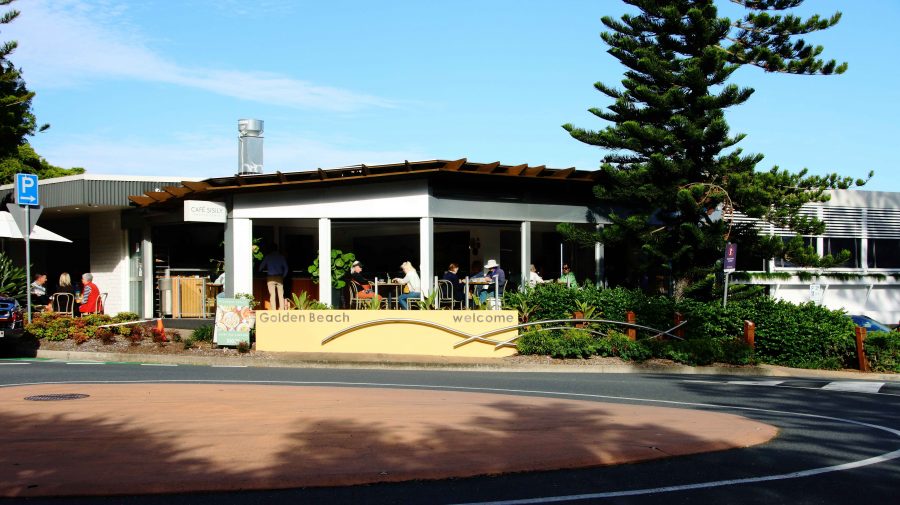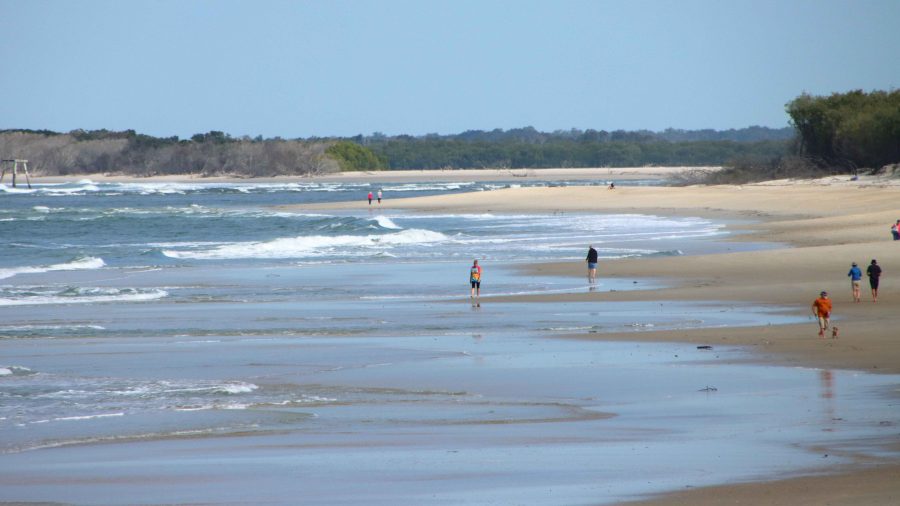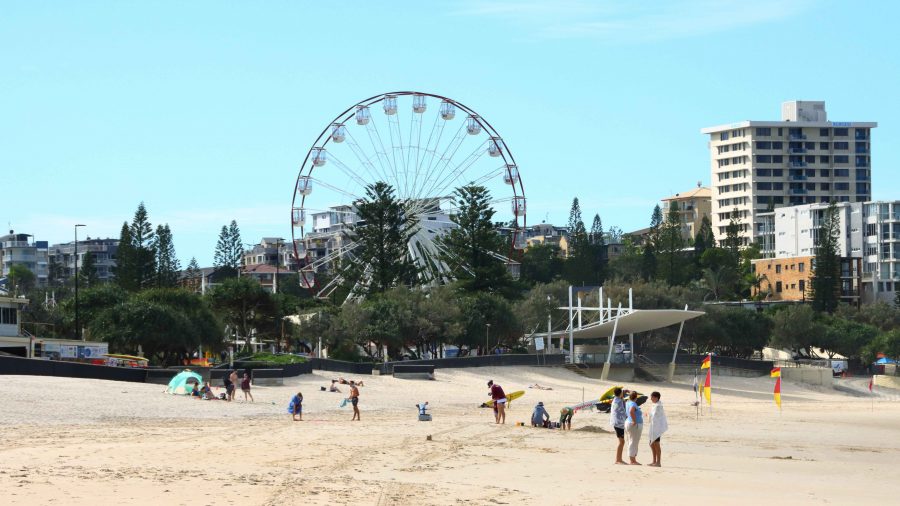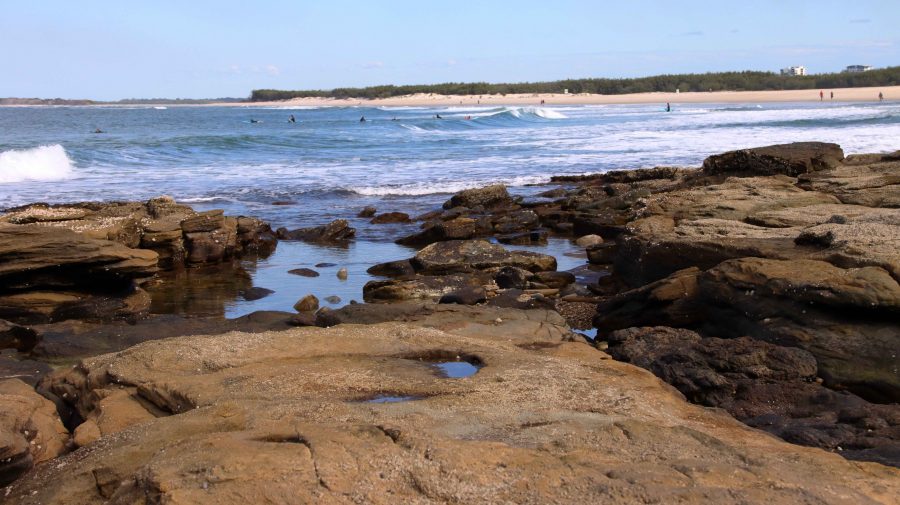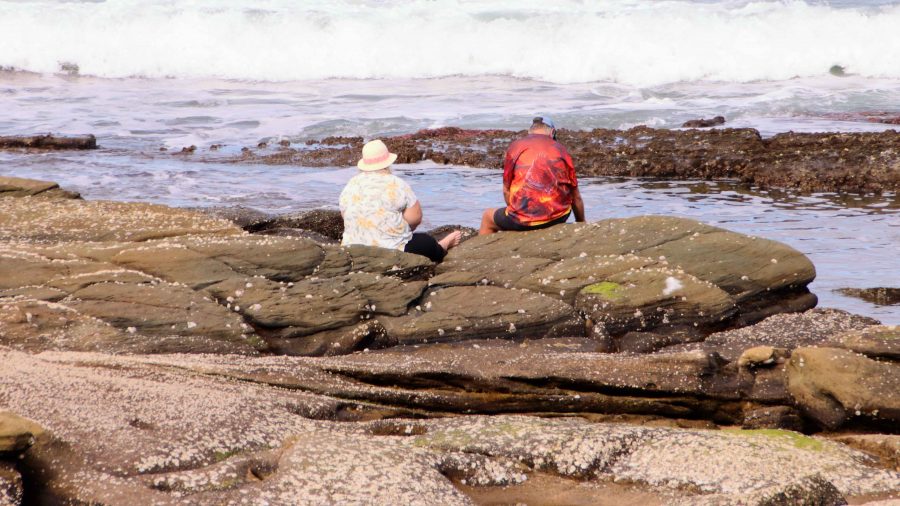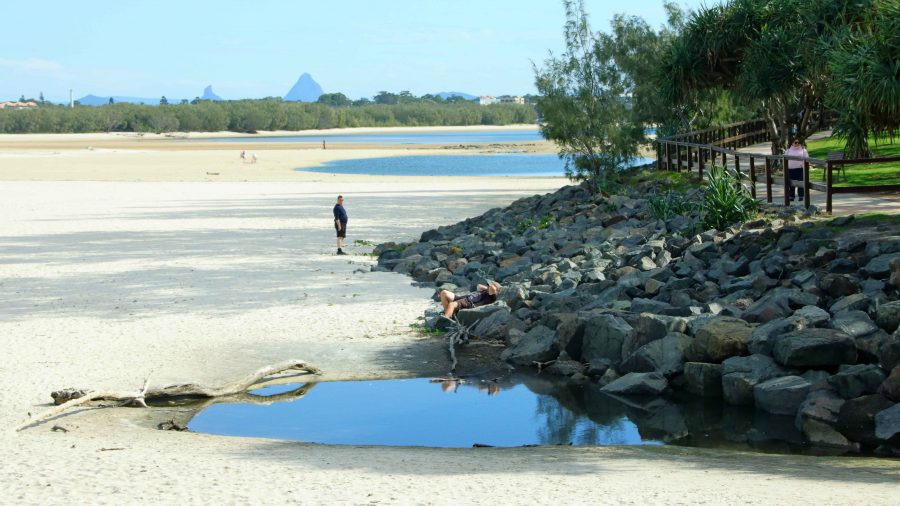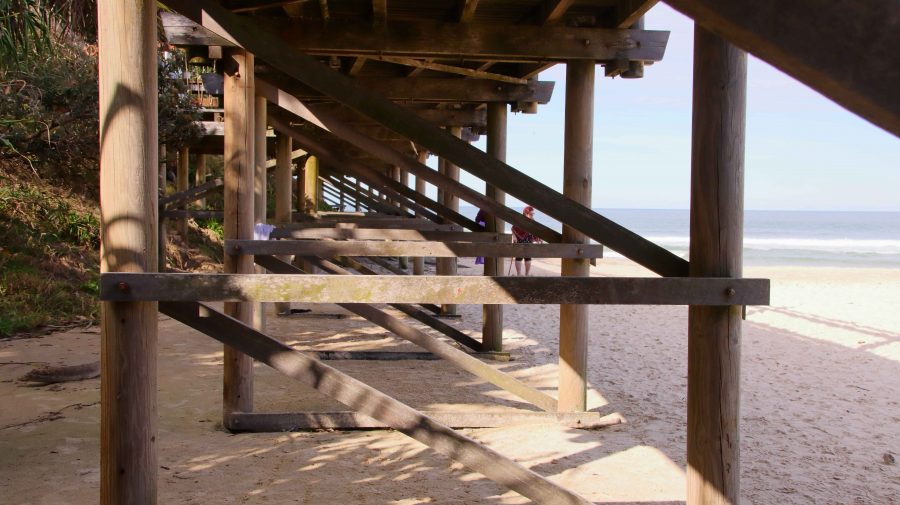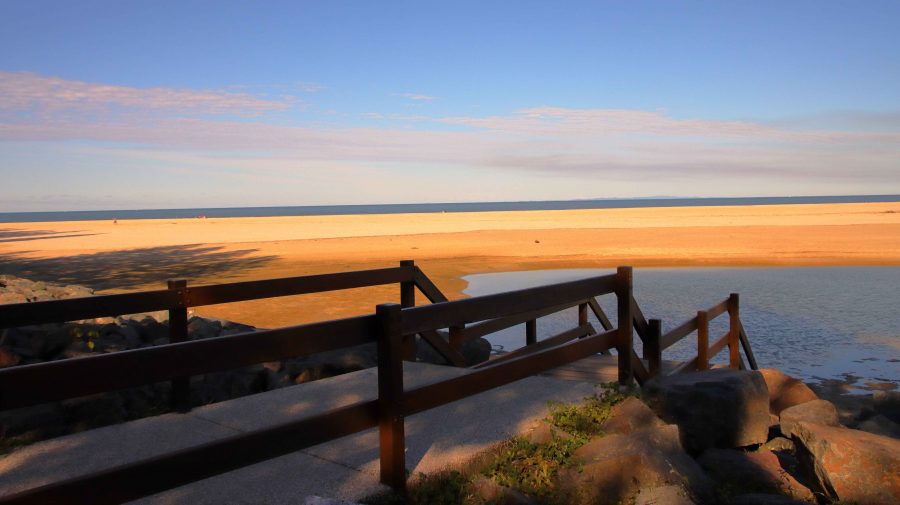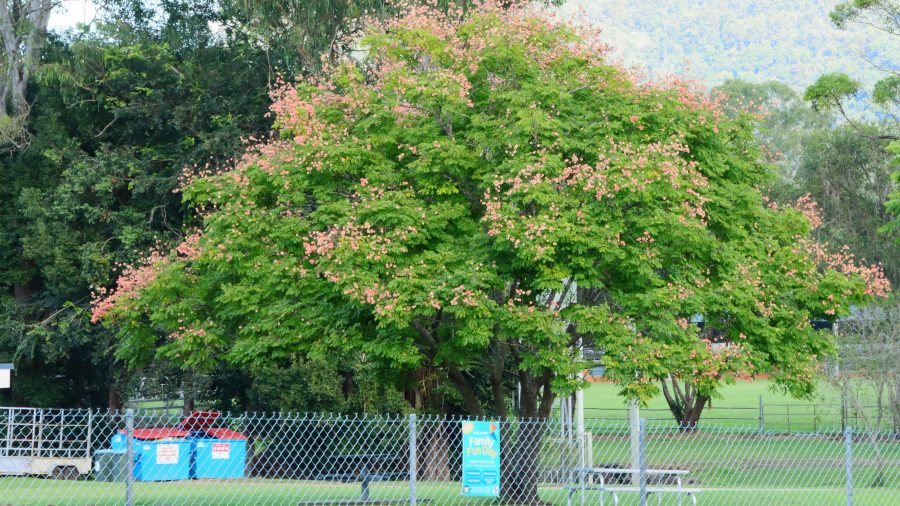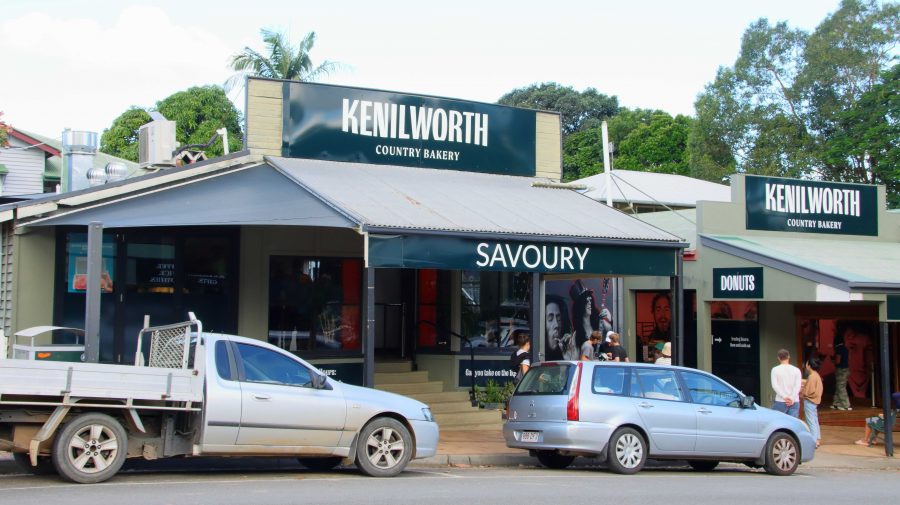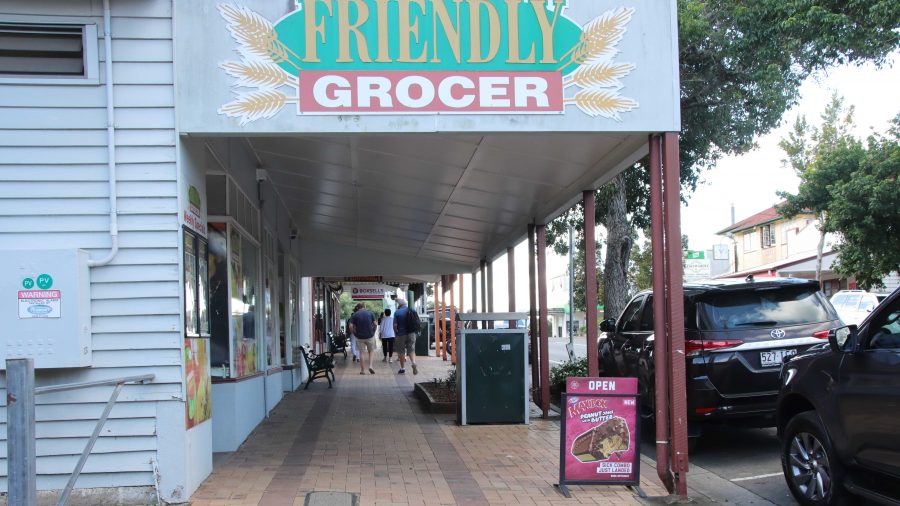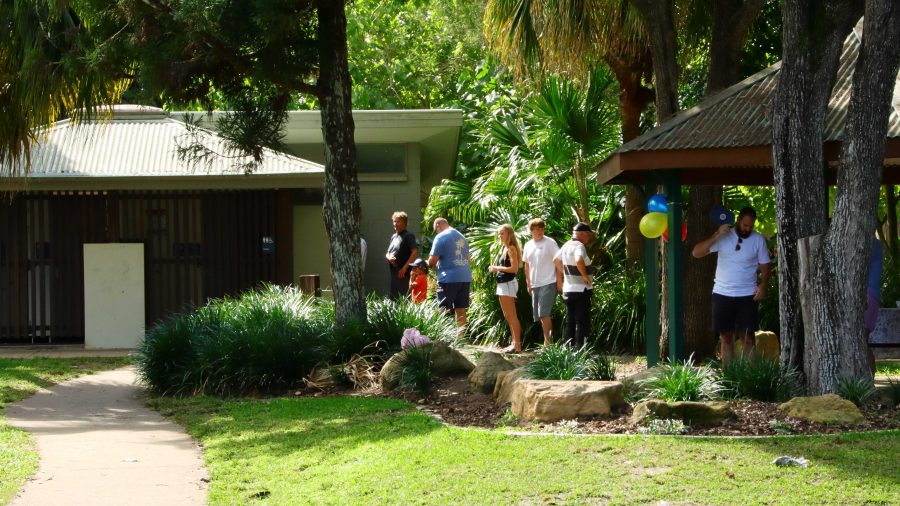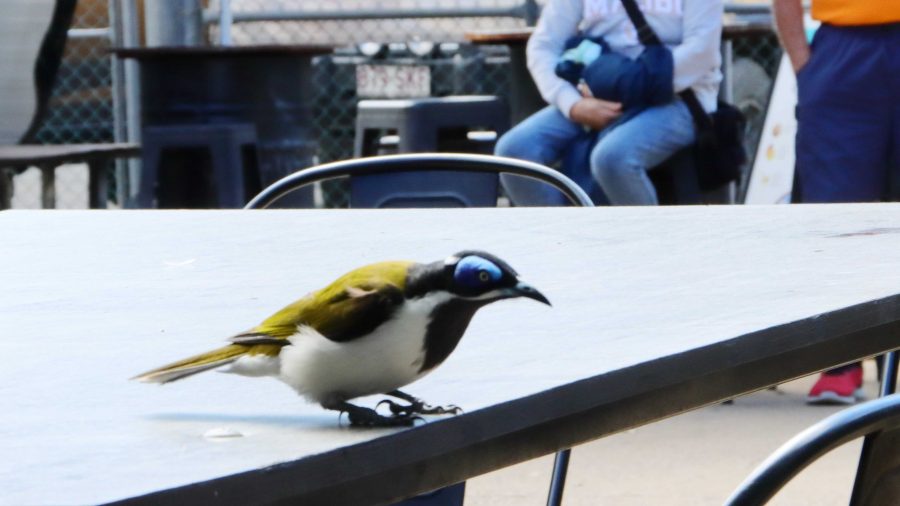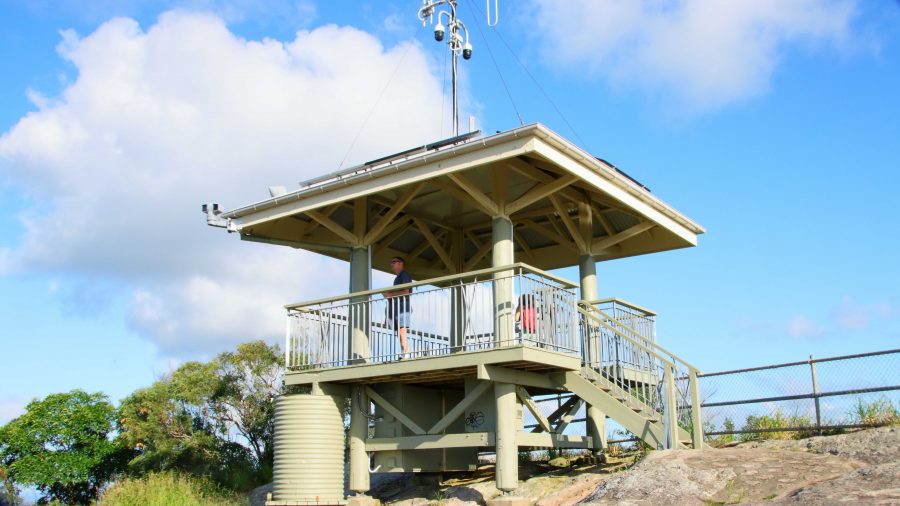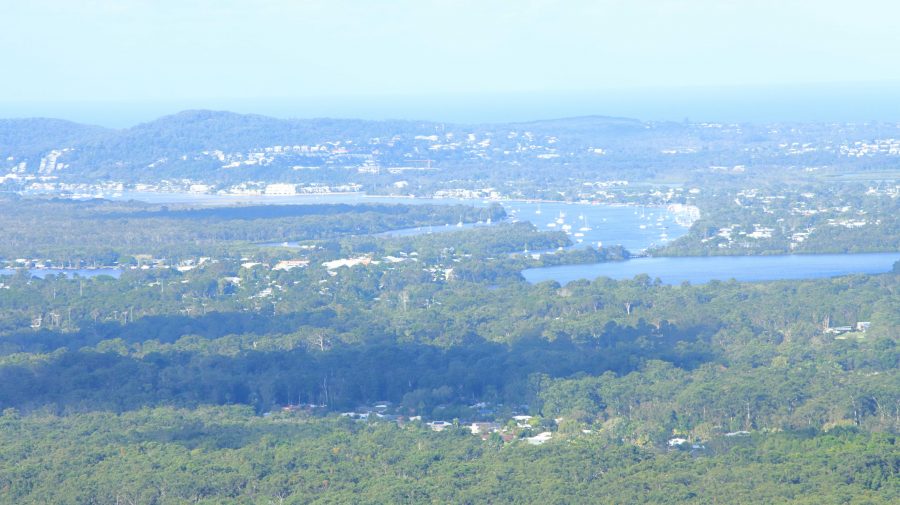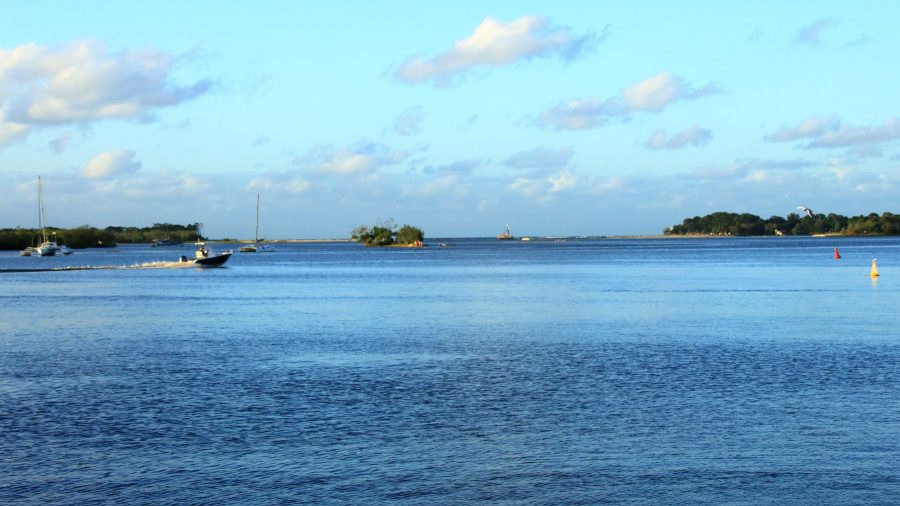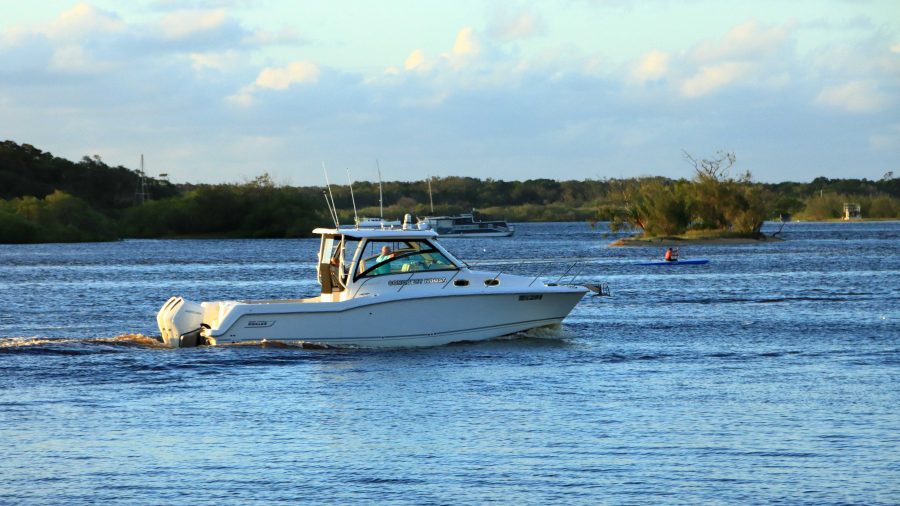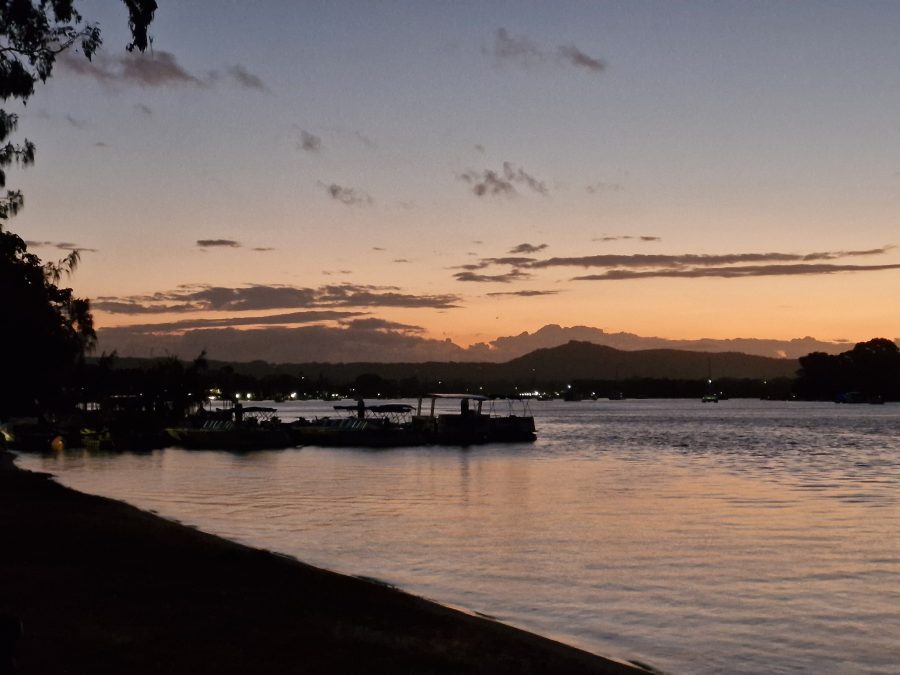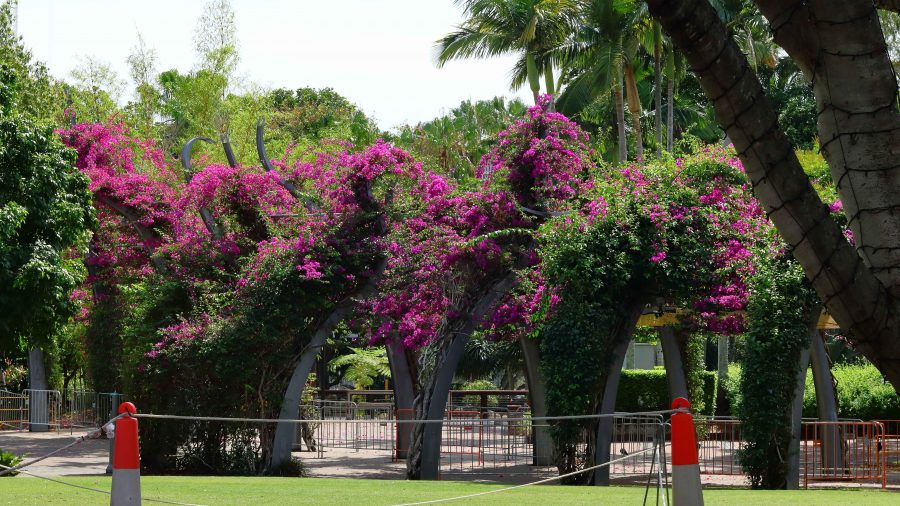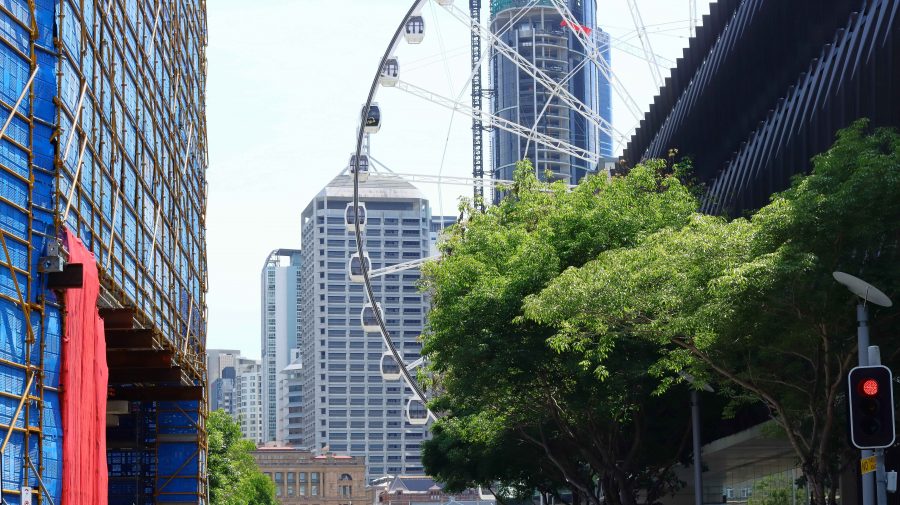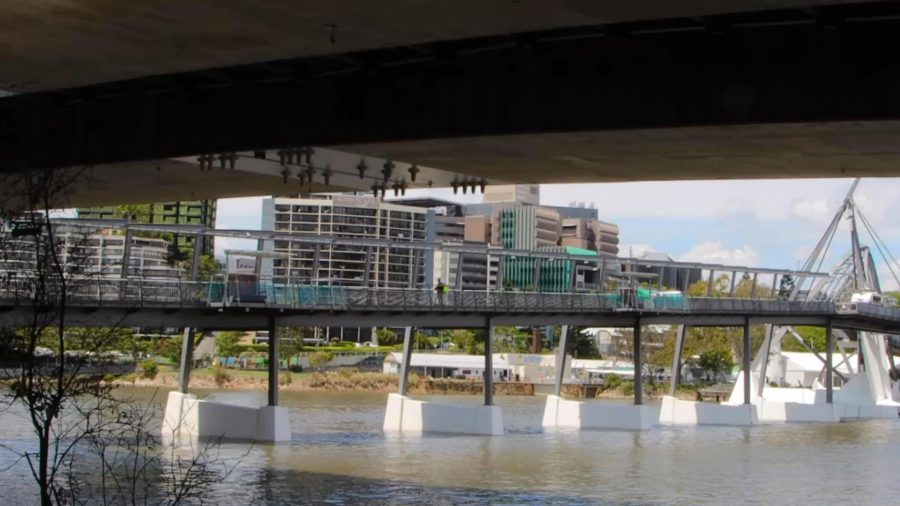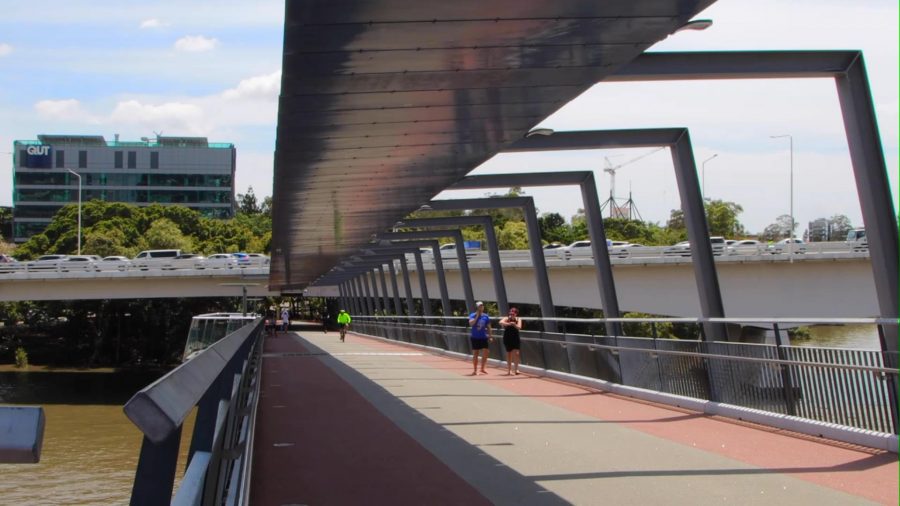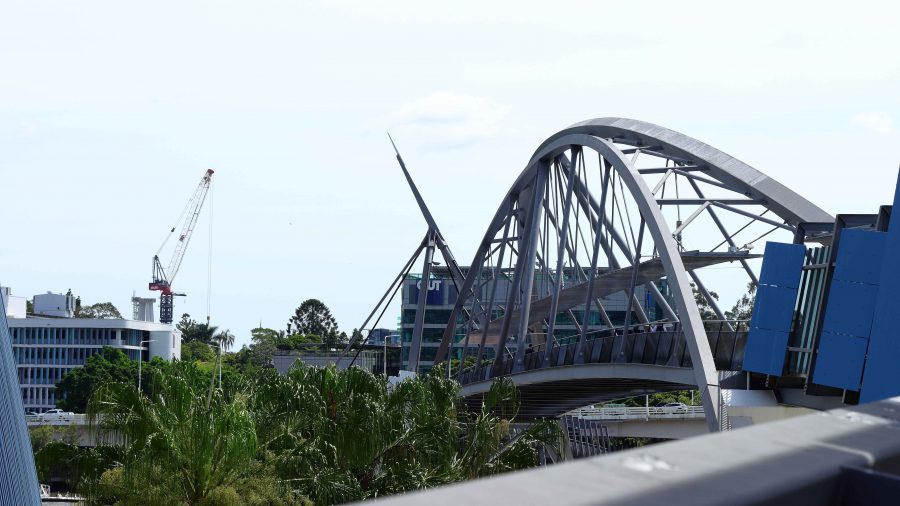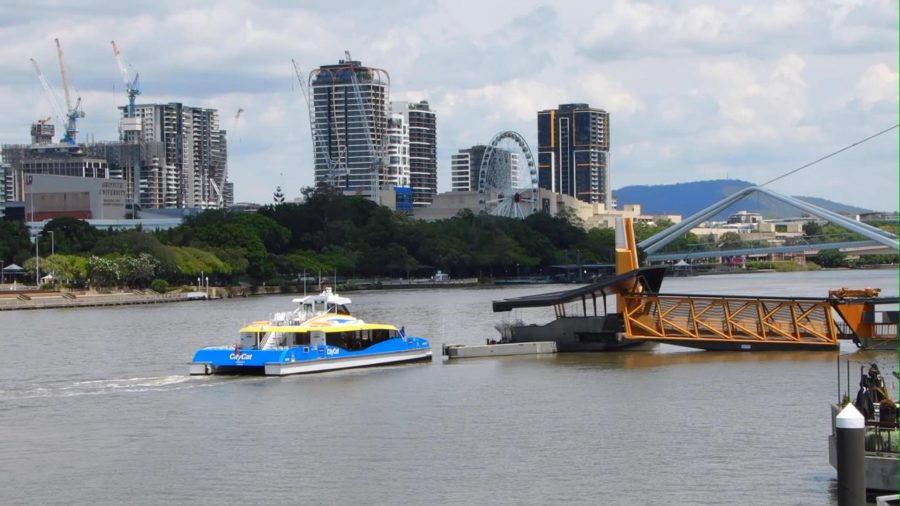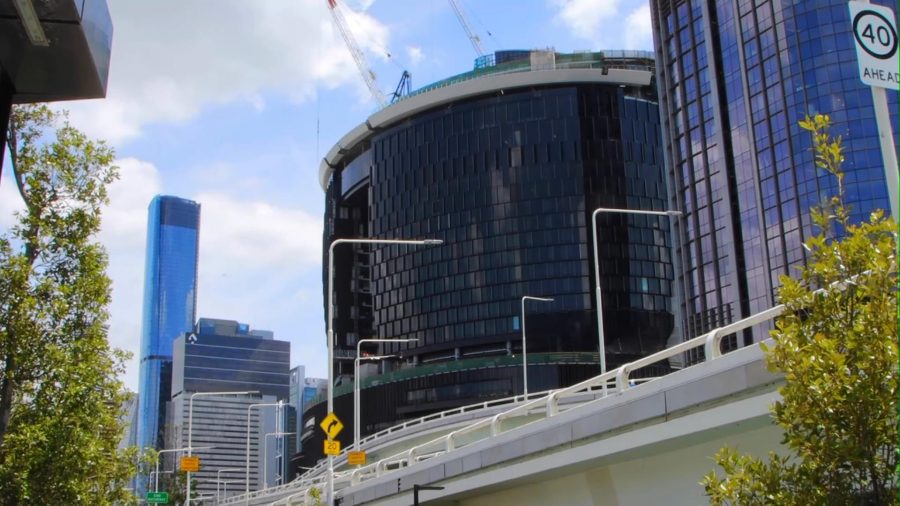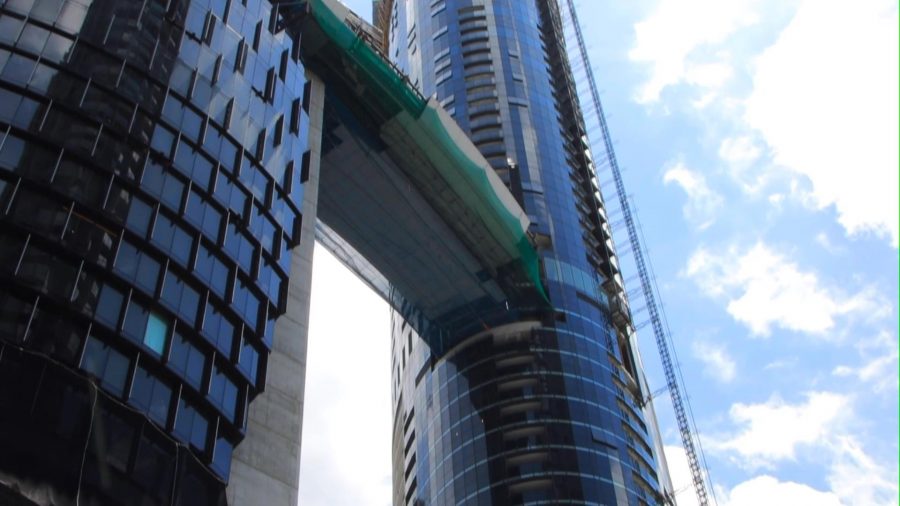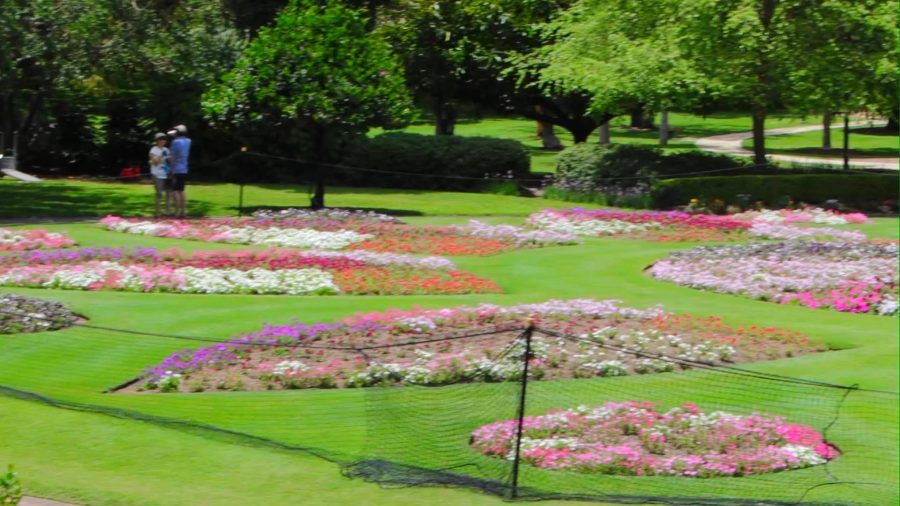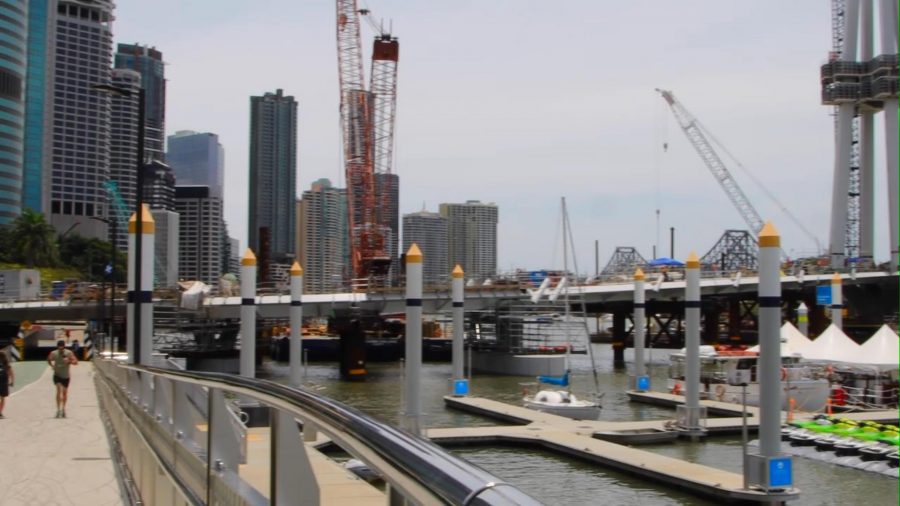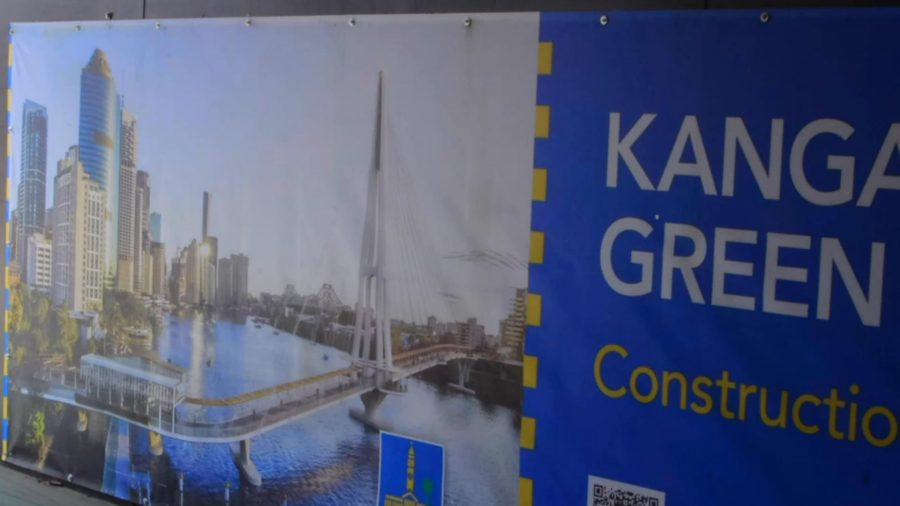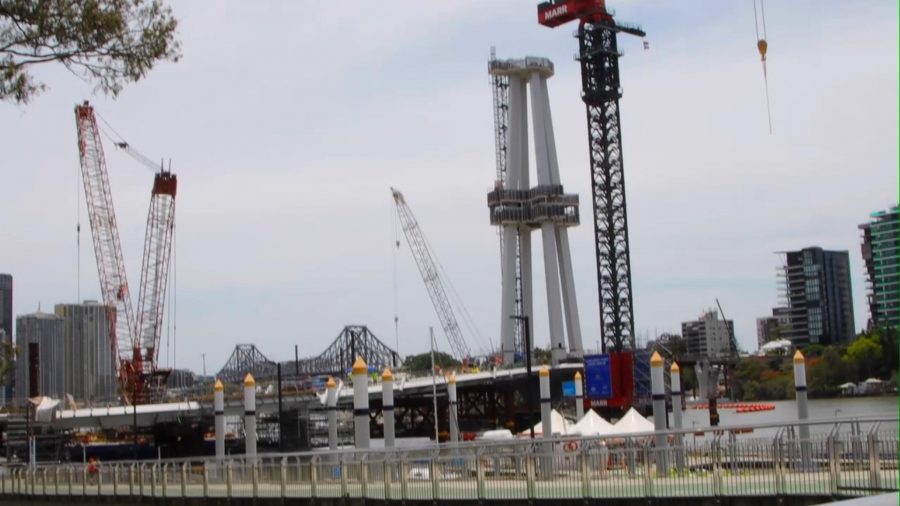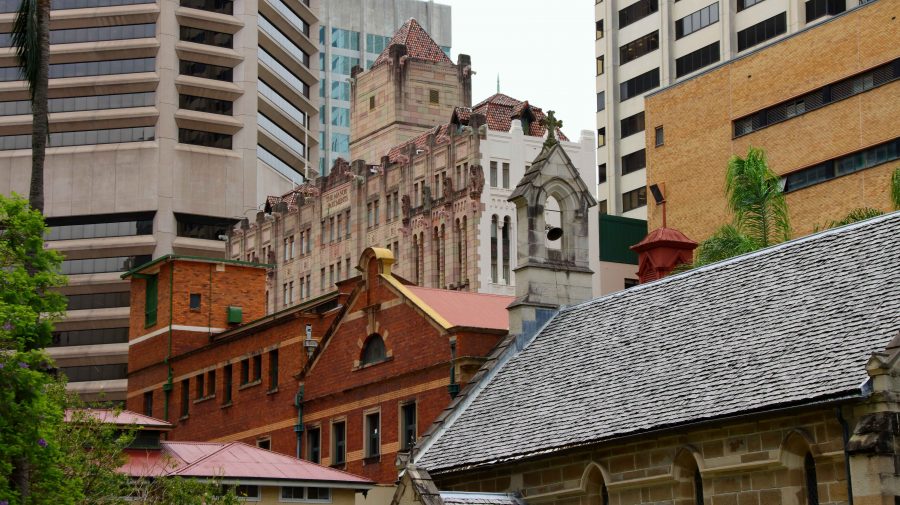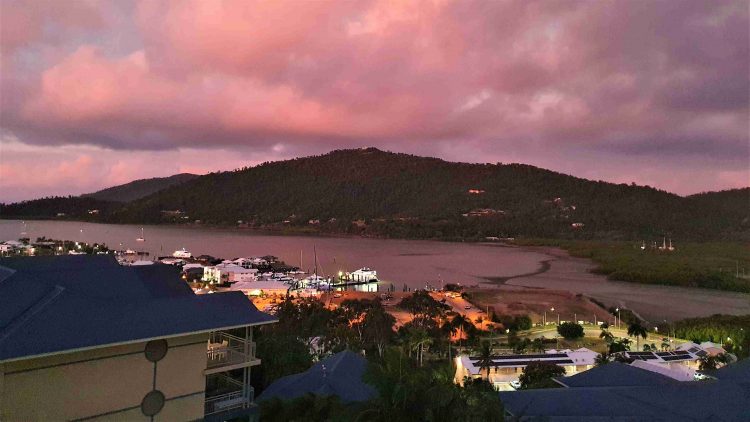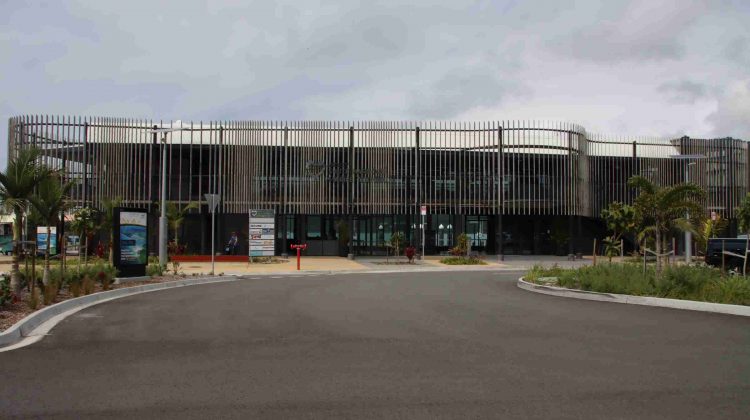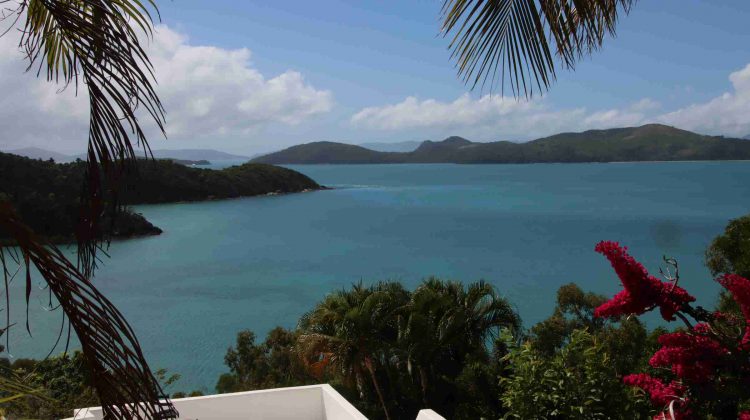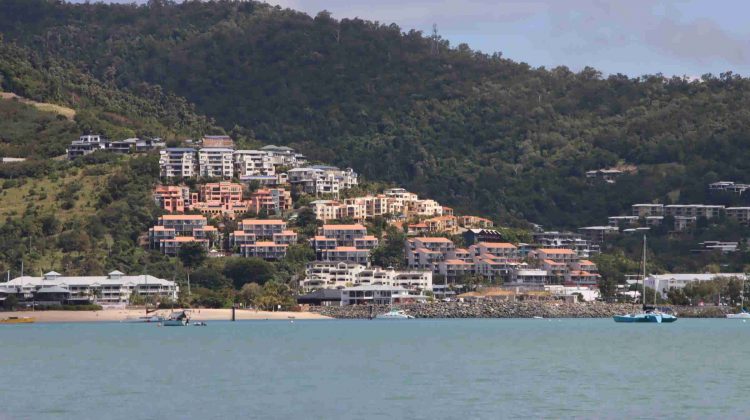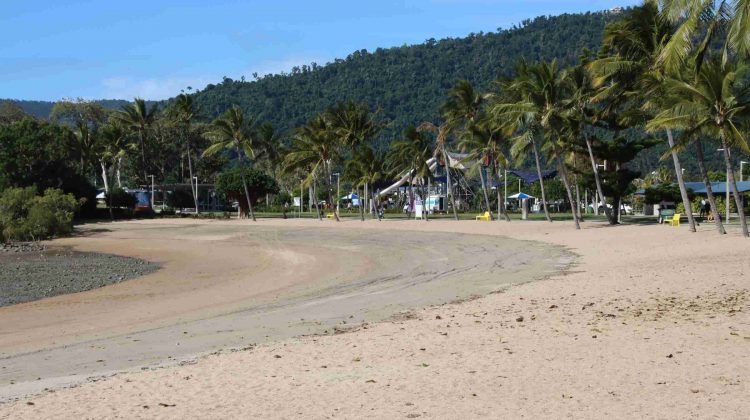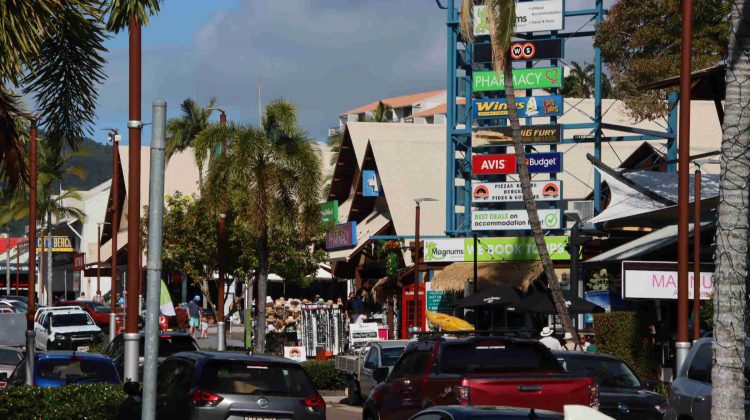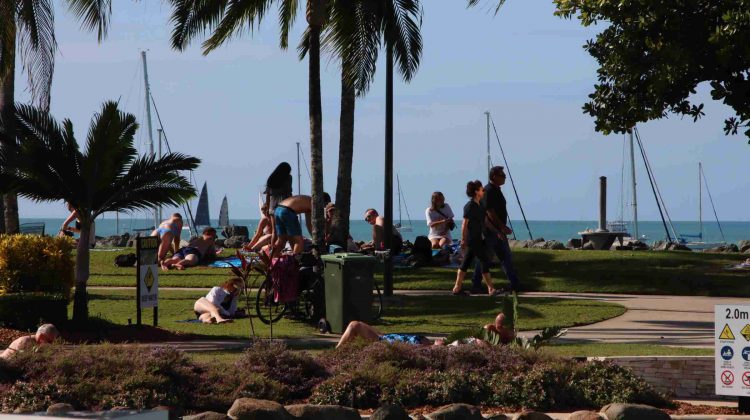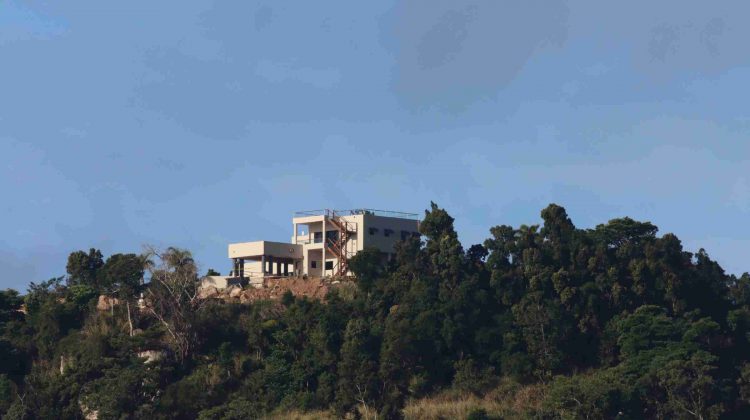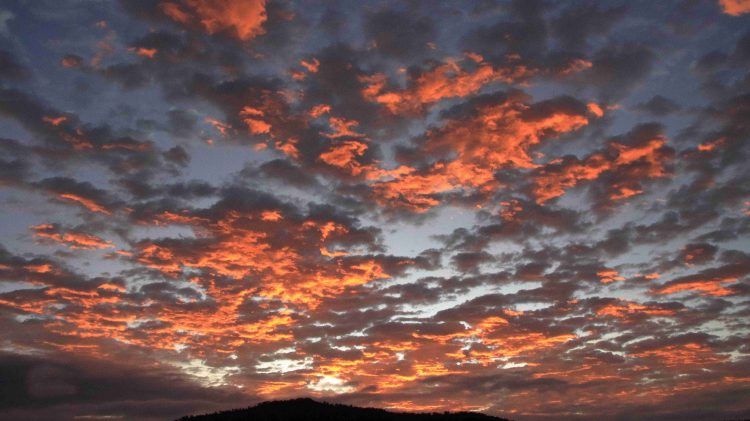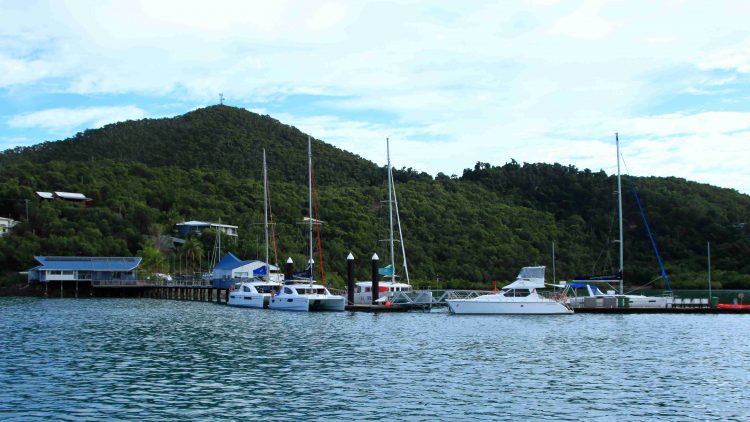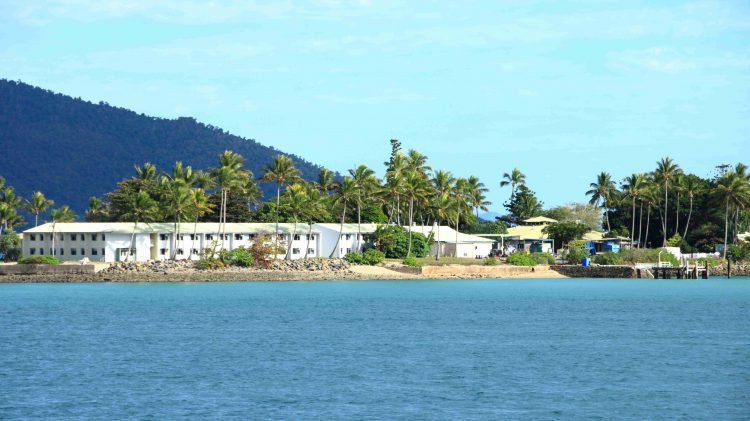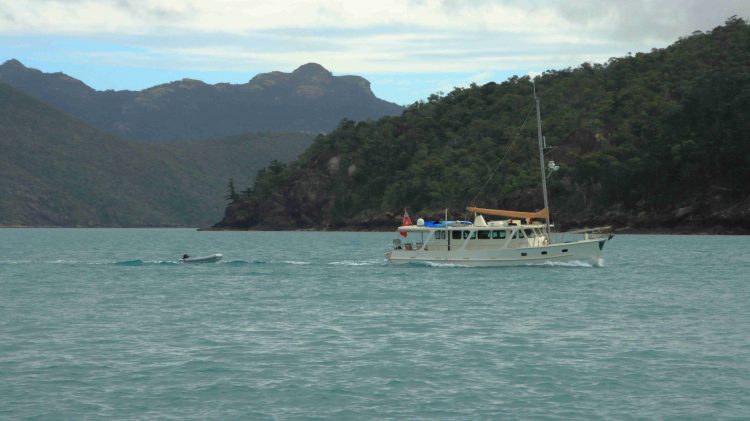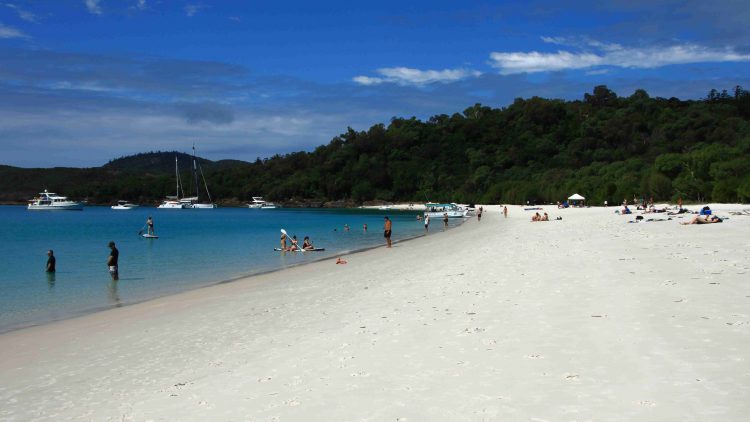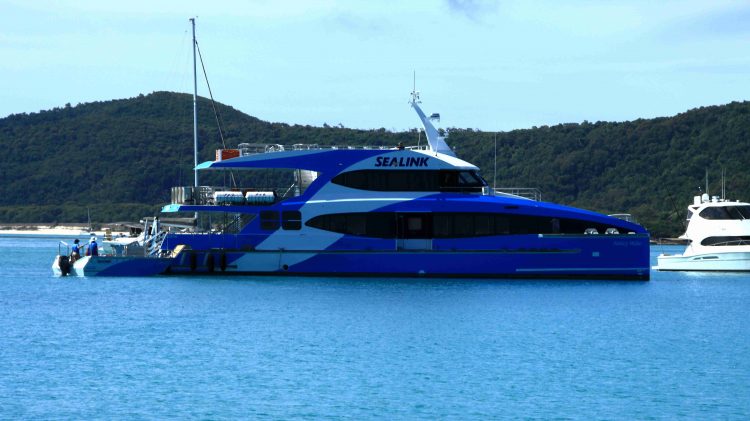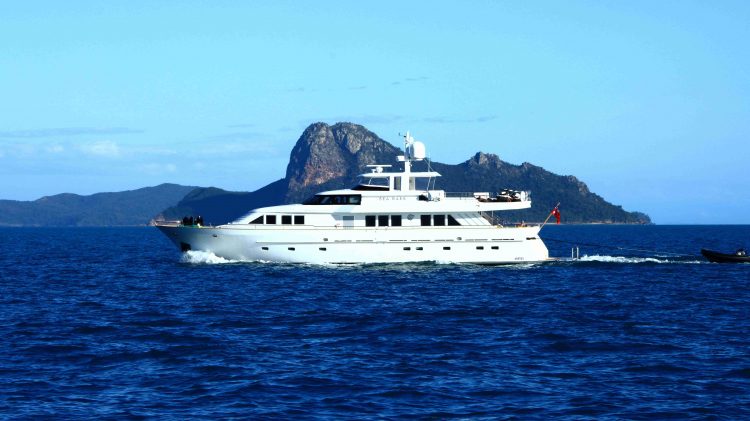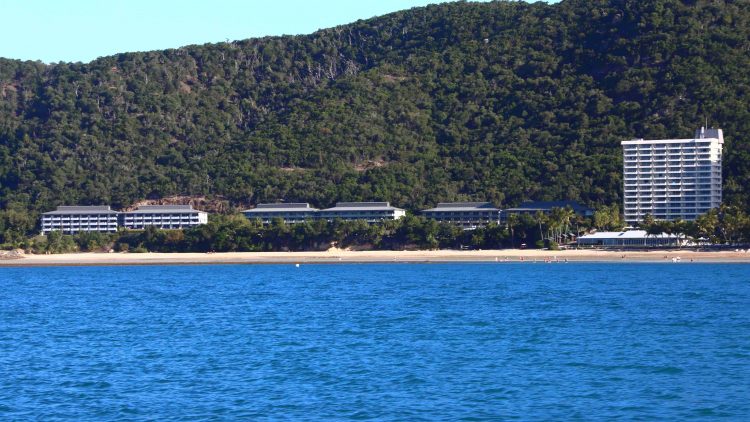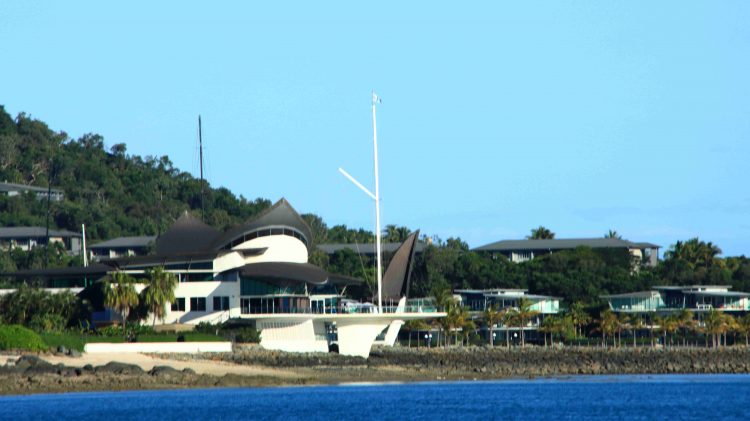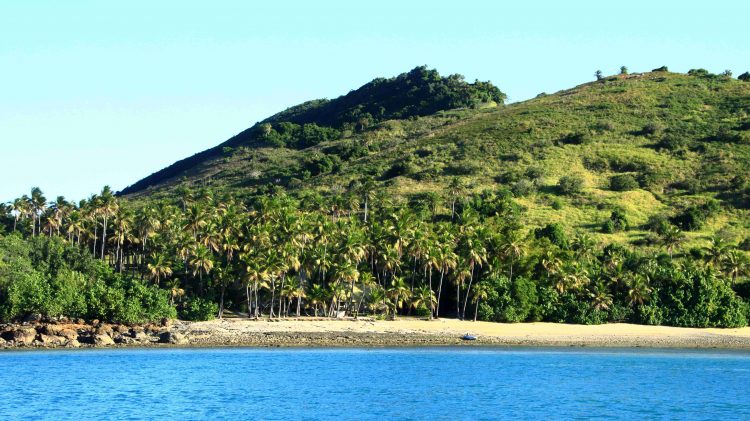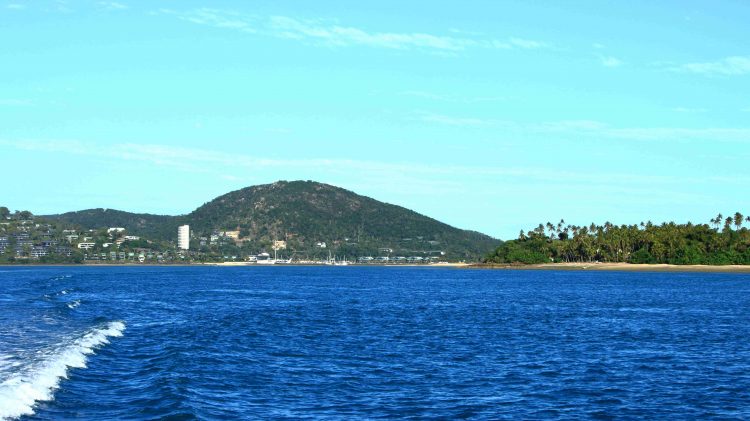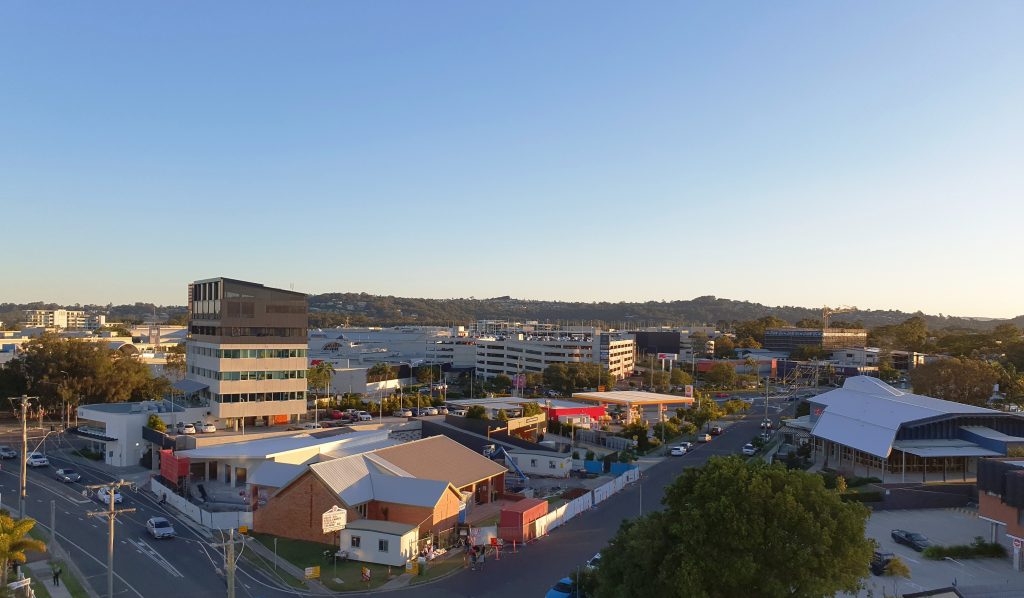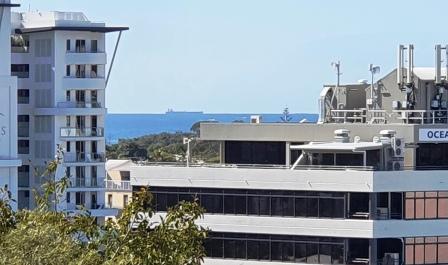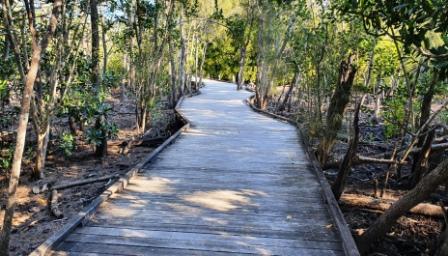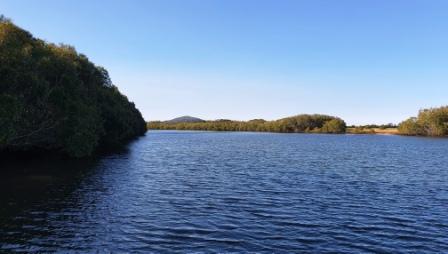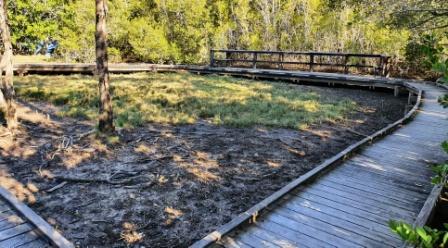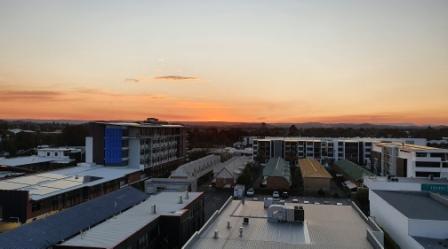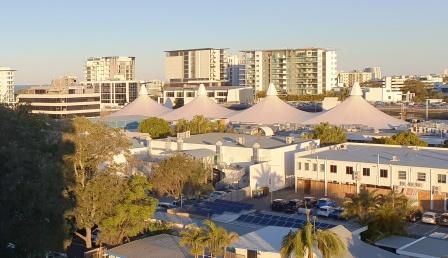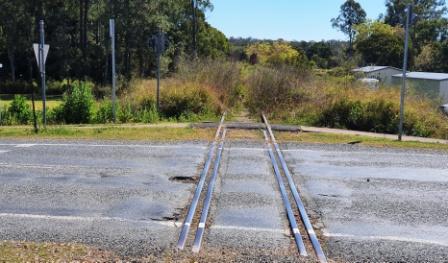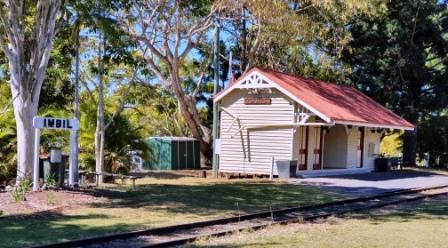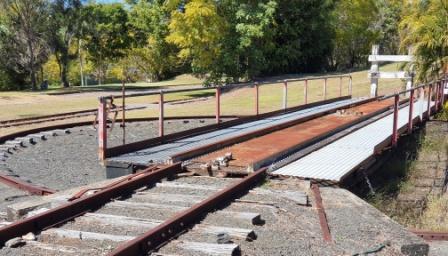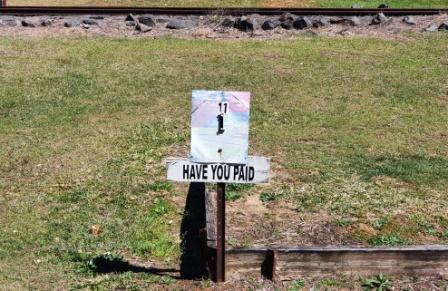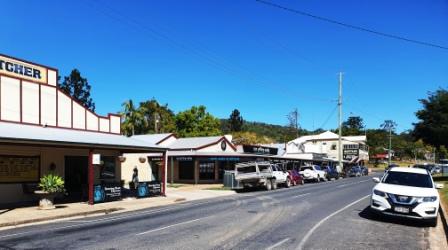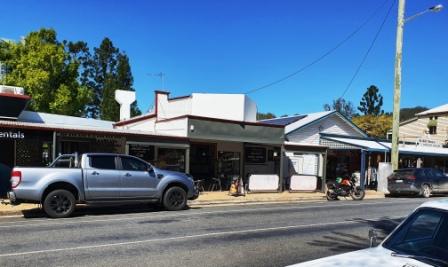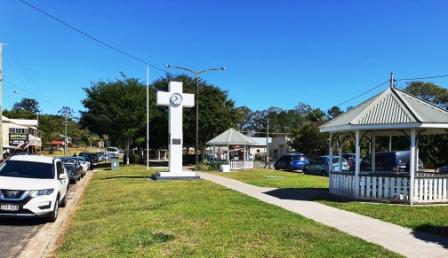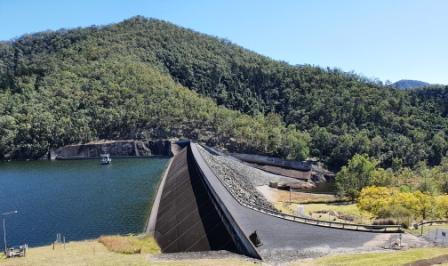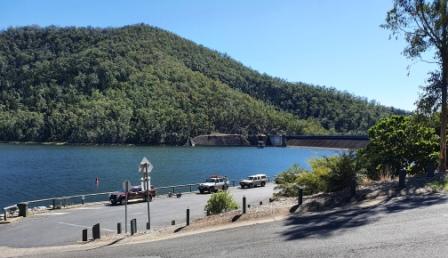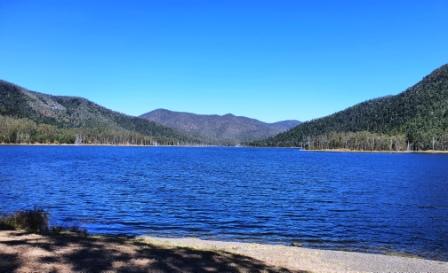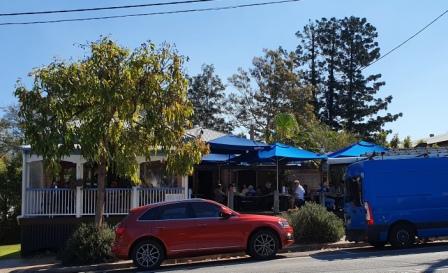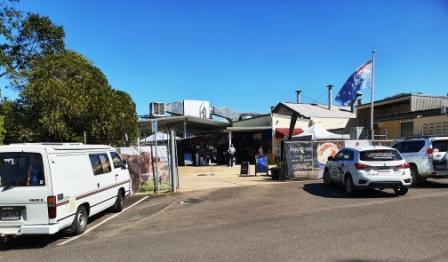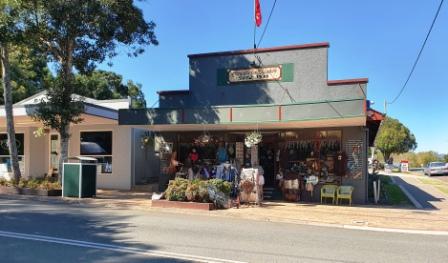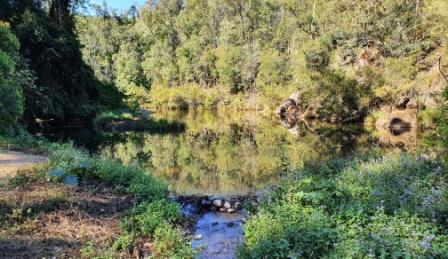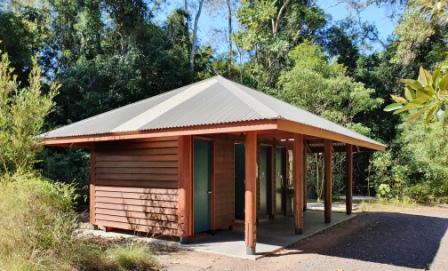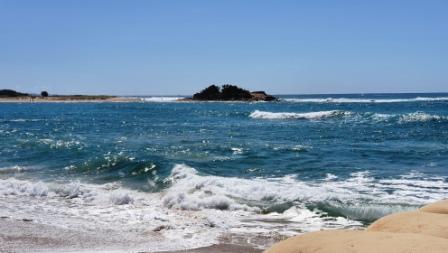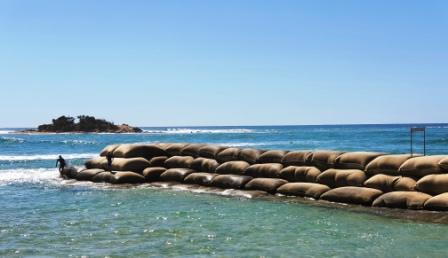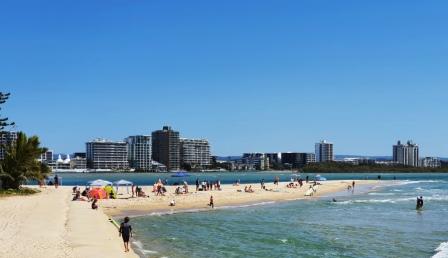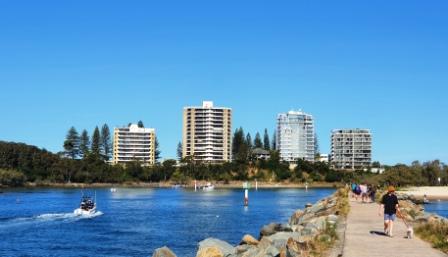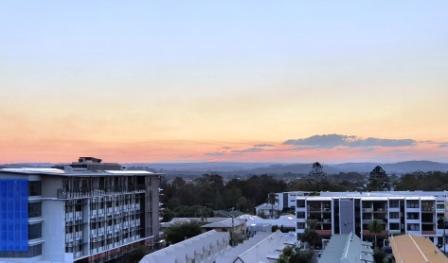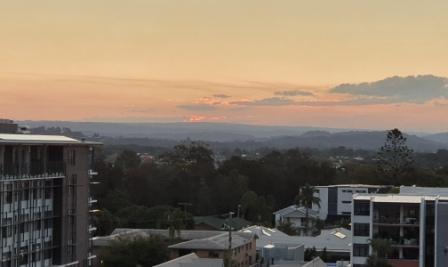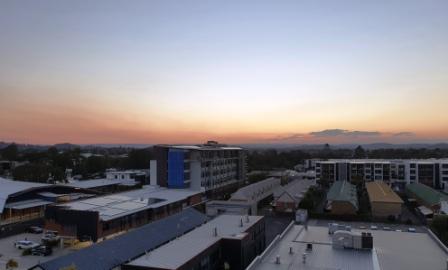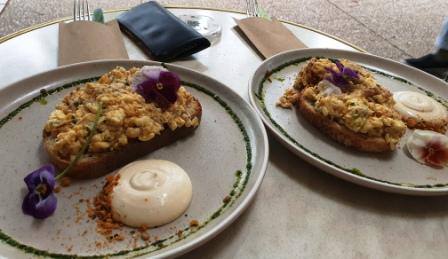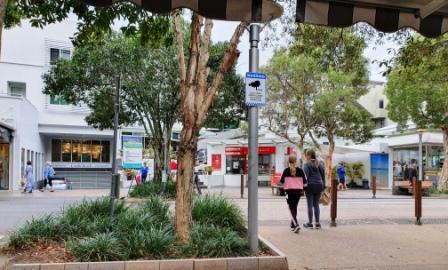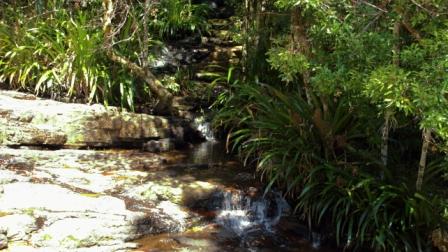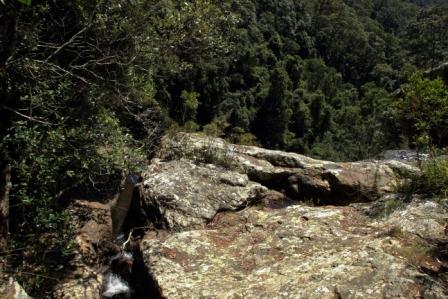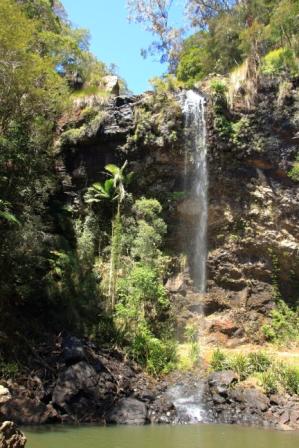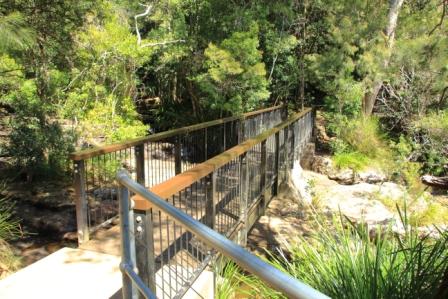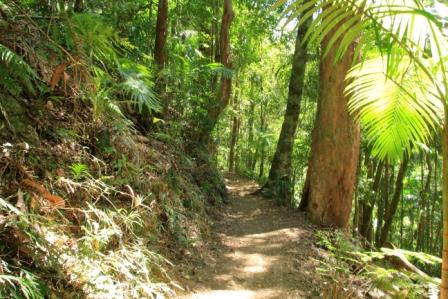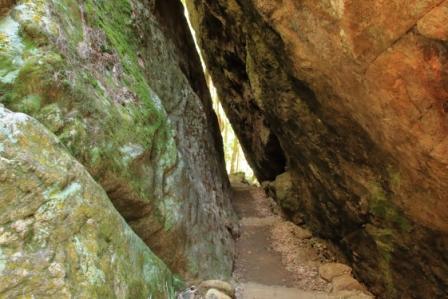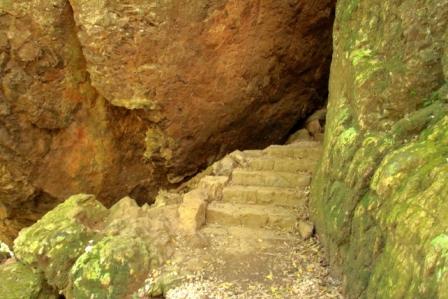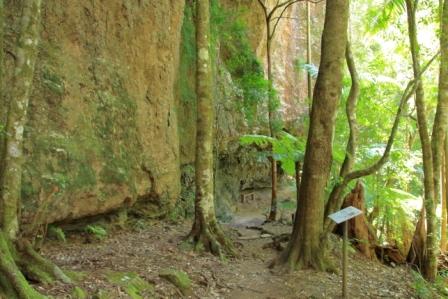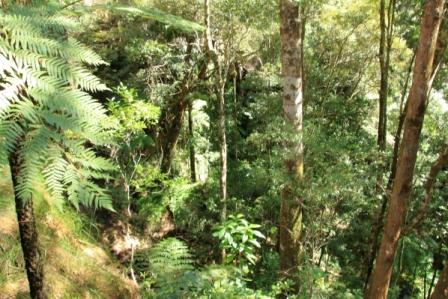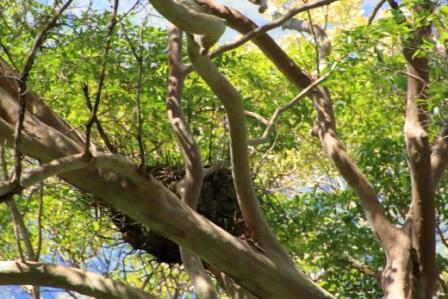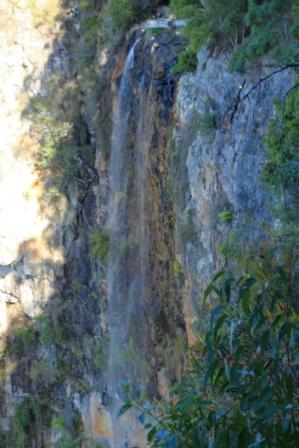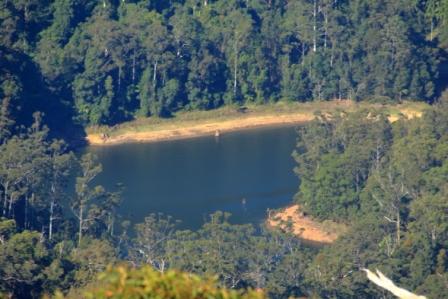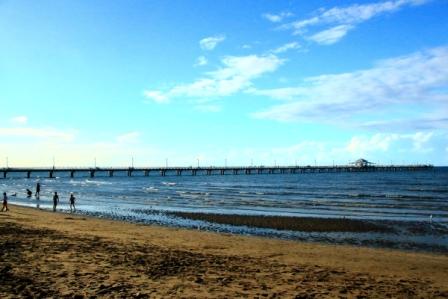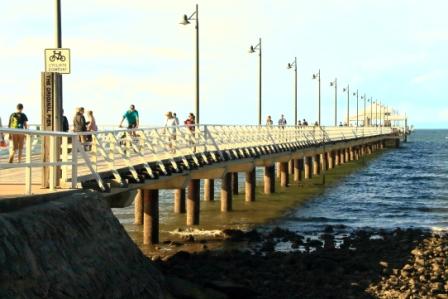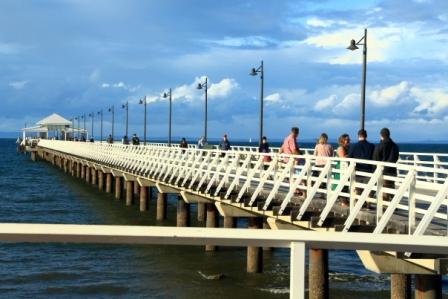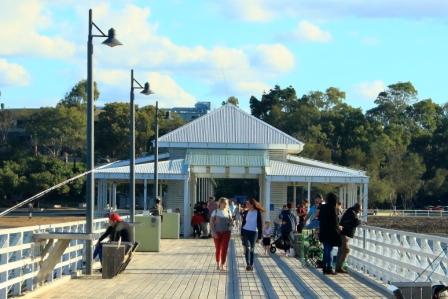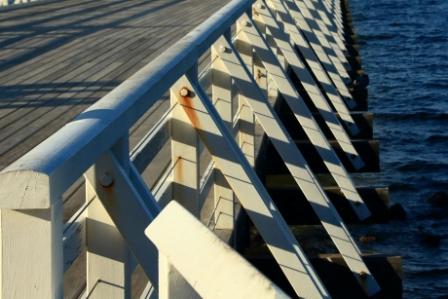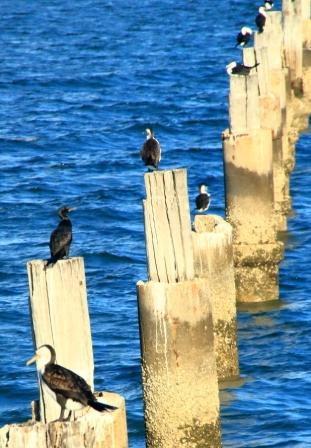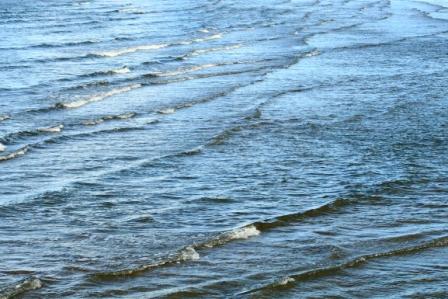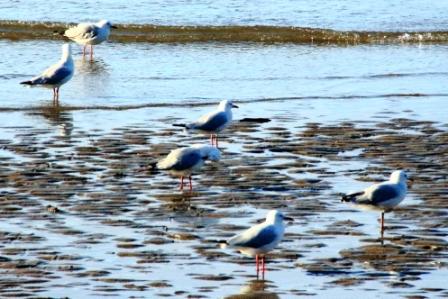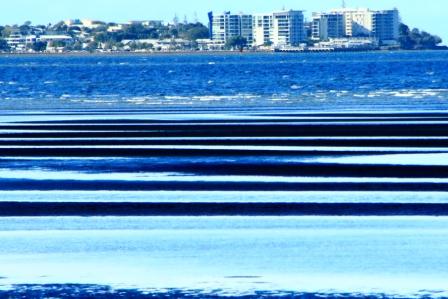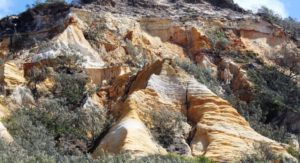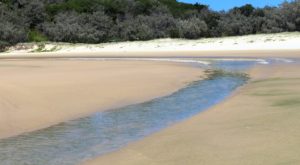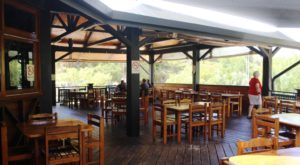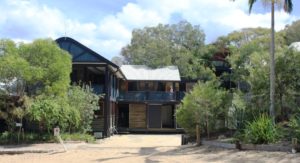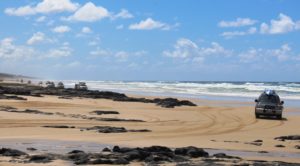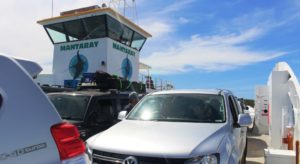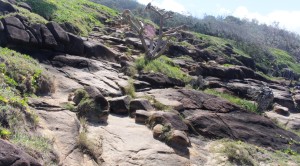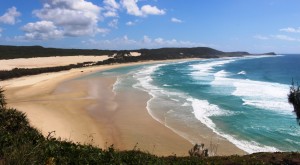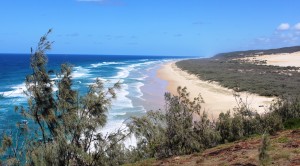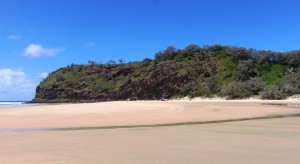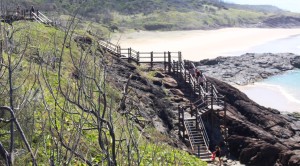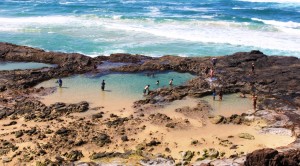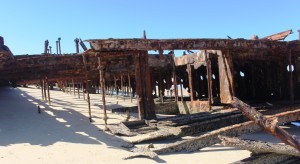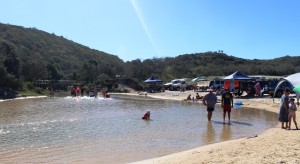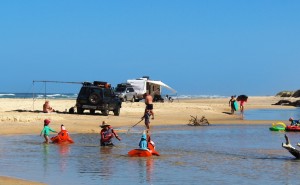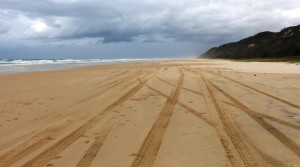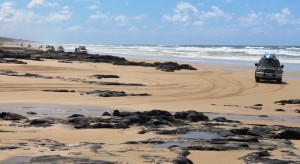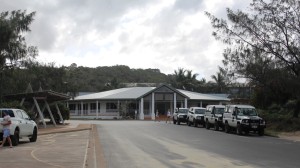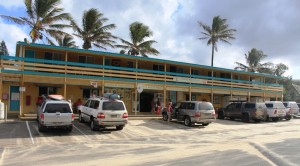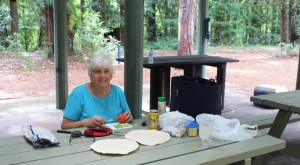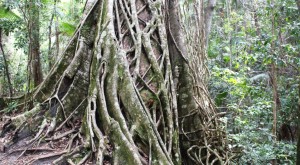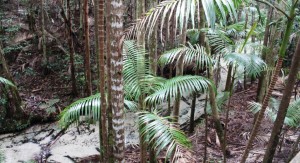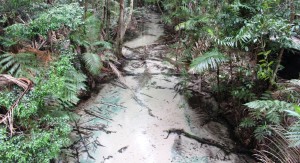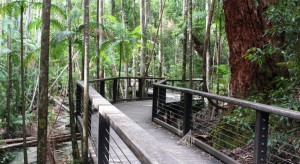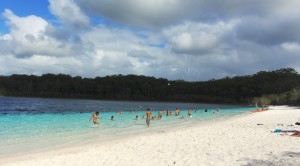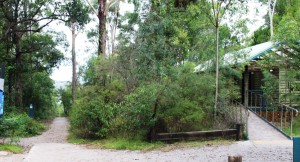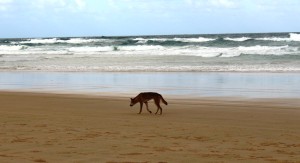Our son and daughter-in-law kindly gave Ruth and I a short break at a time share resort at Golden Beach, near Caloundra Queensland. The Ramada Resort is located right on the shores of Pumicestone Passage, opposite the recent break through by the ocean of the narrow peninsula that is North Bribie Island, thus creating a new passage. This change has greatly improved the view of shipping moving to and from the Port of Brisbane.
Golden Beach is a suburb of Caloundra, situated a couple of kilometres to the Southwest of the main business and tourist centre. It is a precinct of medium high rise, with apartment buildings rising to about 10 floors. The commercial centre has support businesses including pharmacies, real estate agents, hairdressers and restaurants, cafes and coffee shops. It gets quite busy, particularly to and including lunch time.
We arrived at the resort late morning and went through the arrival procedure. Our room, on the second floor, provided fine views of Pumicestone Passage and the waters of North Moreton Bay. The welcome included coffee.
There is normally a bit of shopping to be done when you settle into a resort, so we visited the nearest shopping mall to deal with that problem, made more vital as I had forgotten to pack my pajamas. We returned to our room for a leisurely afternoon.
A walk is always on my agenda, so I set out with my camera for a stroll beside the water. The sun was shining and a slight breeze was blowing. As I returned, a large container ship was heading out to ports unknown. It was surprisingly close to the shore as it turned around the last channel marker to head out to sea.
We catered for ourselves for our evening meal and retired at our normal time. But the sun shining through the new gap in Bribe Island woke us early, so we started our day with coffee and breakfast while we enjoyed the warmth of the sun. In our own unit, we don’t see the sun until later in the day.
Before we ventured out for the day, I walked out onto our balcony and noticed an Eastern Osprey sitting on a branch of one of the Norfolk Pines that line the shore. As I watched, the bird flew off but a couple of minutes later returned with a reasonable size fish secured in the claws of one foot. It landed back on the original limb, stood on its catch until it stopped flapping around and then proceeded to eat it. Not all at once though. I went to get my camera. By the time that I returned it had stopped eating and had secured the remains of the fish under one foot. The food chain in operation!
After visiting a local café for coffee, we took a drive to look at some of the more recently completed areas, to the west of Kawana Lakes but drove via Currimundi Beach. We hadn’t been there for quite a while but nothing much had changed from last time.
I think the suburb was Birtinya. We found a new shopping mall, which we explored. Everything was new and shiny. The shops were not busy, but it was still early in the week.
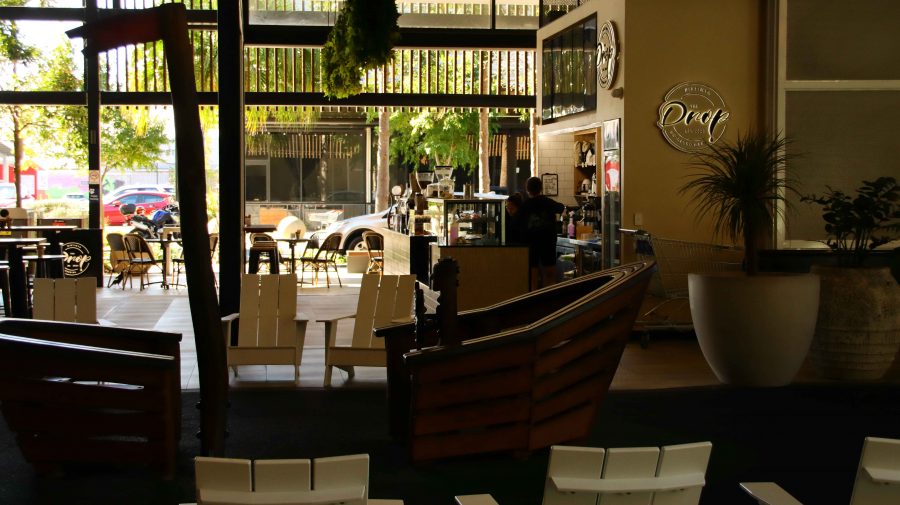
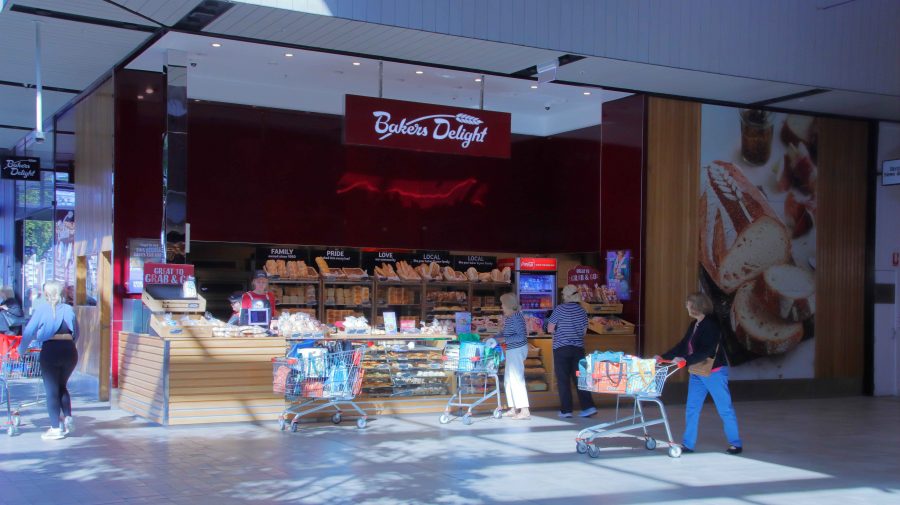
From Birtinya we drove to Point Cartwright, the Headland around which boats from south turn to gain the shelter of the Mooloolah River. The marine facilities in the river include the pilot station for pilotage through the Great Barrier Reef to Cape York. We parked for a few minutes to take in the excellent beach views from the parking area, before returning to Kawana Waters shopping centre for lunch. We returned to our unit mid-afternoon and again took it easy with a self-catered and simple evening meal.
A former workmate, now resident in one of Caloundra’s several rapidly developing satellites, picked up from a Facebook post that we were in the area and messaged, suggesting we meet for coffee. What a good idea!
So, our last day started with a meeting in an excellent coffee shop just a short walk from our resort. I was introduced to the delights of Cannoli. Somehow, I have reached my considerable age without trying it. It was delightful and is now on the morning coffee menu of possibilities. It was a pleasant catch up with Sandy, who we had not seen for quite some time.
After lunch at our unit, we drove to Happy Valley and parked where Ruth had a good view of the ocean while I walked the board walk to Kings Beach, to get in some steps and to take some photographs. The weather was pleasantly warm with a scattering of sunbathers on the beach.
The breakthrough of the ocean to Pumicestone Passage has led to the old bar at Bulcock Beach totally silting up. Now, where once the tide swept into and out of Pumicestone Passage there is now a sand dune that is no longer breached even by the highest tides. I wandered over part of the sand filled area, photographing as I progressed, until returning to the car and then to our unit.
Since this was our last night, we dined at the Copper Spoon Thai Restaurant on the resort grounds. We enjoyed a delicious meal, savoring the delightful flavors for which good Thai food is known.

All that was left of the short break, after another restful night, was breakfast and the drive home next morning.

